 |
| Photo by Irving Penn |
The 20 Best Novels
of the Decade
Emily Temple
December 23, 2019
Friends, it’s true: the end of the decade approaches. It’s been a difficult, anxiety-provoking, morally compromised decade, but at least it’s been populated by some damn fine literature. We’ll take our silver linings where we can.
So, as is our hallowed duty as a literary and culture website—though with full awareness of the potentially fruitless and endlessly contestable nature of the task—in the coming weeks, we’ll be taking a look at the best and most important (these being not always the same) books of the decade that was. We will do this, of course, by means of a variety of lists. We began with the best debut novels, the best short story collections, the best poetry collections, the best memoirs, the best essay collections, the best (other) nonfiction, and the best translated novels of the decade. We have now reached the eighth and most difficult list in our series: the very best novels written and published in English between 2010 and 2019.
You may be shocked to learn that we had a hard time deciding on 10. So, being captains of our own destiny, we decided we were allowed to pick 20 . . . plus almost that many dissents. We did not allow reissues, otherwise you had better believe this list would include The Last Samurai, Speedboat, and Who Was Changed and Who Was Dead, among a robust host of others. We also, for this list, discounted novels in translation, as they got their very own list last week, and including them would have necessitated a list twice as long. (My beloved Sweet Days of Discipline, certainly in the top ten novels I personally read this decade, is doubly ineligible, but luckily I also write these introductions.)
Now, for the last time: the following books were chosen after much debate (and several rounds of voting) by the Literary Hub staff. Tears were spilled, feelings were hurt, books were re-read. As ever, free to add any of your own favorites that we’ve missed in the comments below.
***
The Top Twenty
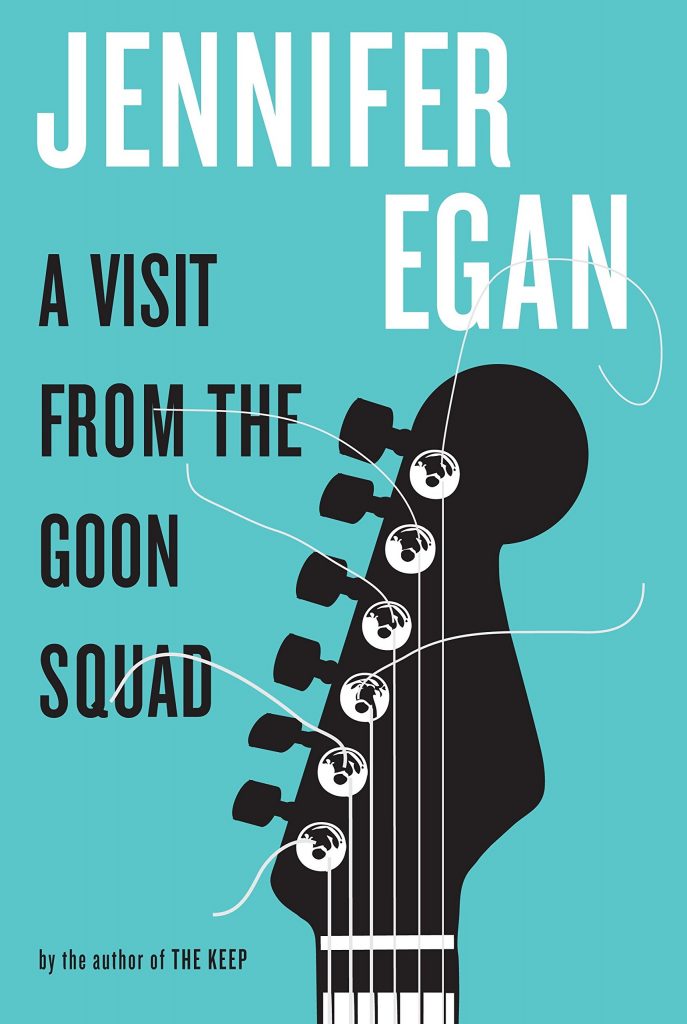 JENNIFER EGAN, A VISIT FROM THE GOON SQUAD (2010)
JENNIFER EGAN, A VISIT FROM THE GOON SQUAD (2010)
There are some moments from A Visit From the Goon Squad that I won’t forget. In one chapter, a former PR hotshot named Dolly is tasked with reviving the public image of an African dictator known as “The General” with the help of a B-list actress named Kitty Jackson. Kitty’s job is to stand next to The General in a photo, but she ends up asking too many questions about a genocide and gets thrown into prison. Months later, it turns out, The General’s government becomes a democracy, Kitty is freed, and Dolly opens a sandwich shop. This strand of Egan’s polyphonic, funny, and often poignant book encapsulates some of her satire’s recurring ideas. In Goon Squad, a book with a large cast of characters set in a period roughly spanning the late 1970s to the 2020s, shifts in time are always jarring—they can destroy the body, corrupt memory, and blur processes of change. Nominally centered on the American celebrity industrial complex (particularly rock’n’roll in the Bay Area), Goon Squad is also very much about media “spin,” fragmented perspectives, illusory identities, and aimless materialism in a capitalist society. Though the premise may seem to indicate otherwise, the book is decidedly skeptical of nostalgic impulses. “Time is a goon,” one of Egan’s characters says. The past is nothing if not the foundation of contemporary disillusionment with its promises—promises of beauty, fame, family, and the attainment of other icons. Goon Squad earned Egan well-deserved plaudits, including the 2011 Pulitzer Prize and the National Book Critics Circle Award, and cemented her status as one the 21st century’s most insightful (and formally experimental) American writers. –Aaron Robertson, Assistant Editor
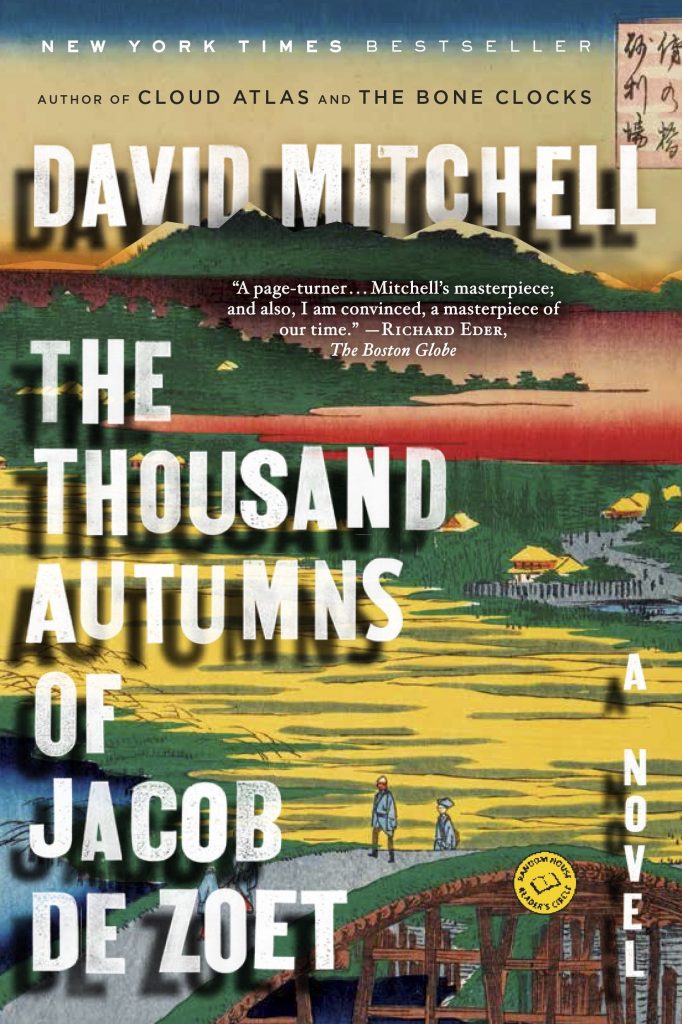 DAVID MITCHELL, THE THOUSAND AUTUMNS OF JACOB DE ZOET (2010)
DAVID MITCHELL, THE THOUSAND AUTUMNS OF JACOB DE ZOET (2010)
It is easier to conjure the intellectual-literary atmosphere of an era when it is 30 years’ past than when it is a mere decade ago. It is hard to see 2010 right now, as we wait for time and the canon to true the lens, but I have a very clear sense-memory of revelation and exhilaration as I sped through David Mitchell’s epic-historical ghost story, The Thousand Autumns of Jacob de Zoet, wondering if the spirit of Robert Louis Stevenson had momentarily taken possession of Haruki Murakami. Here was a reminder that the world of a novel—in this case, a very detailed rendering of an 18th-century Dutch trading post in the port of Nagasaki—can be fuller, more vivid, than our own, that it can exist as a hothouse for the reader’s moral imagination.
It is difficult to say what another 25 years will make of The Thousand Autumns of Jacob de Zoet. In the context of Mitchell’s more recent novels, and their space-operatic excesses, the plot of De Zoet seems worryingly baroque, show-offy, even. But it is clearly the work of the same writer who gave us the near-perfect coming-of-age novel, Black Swan Green, its language similarly precise and unexpected, all in aid of a story that seems somehow to tell itself, a true history that never quite happened. –Jonny Diamond, Editor in Chief
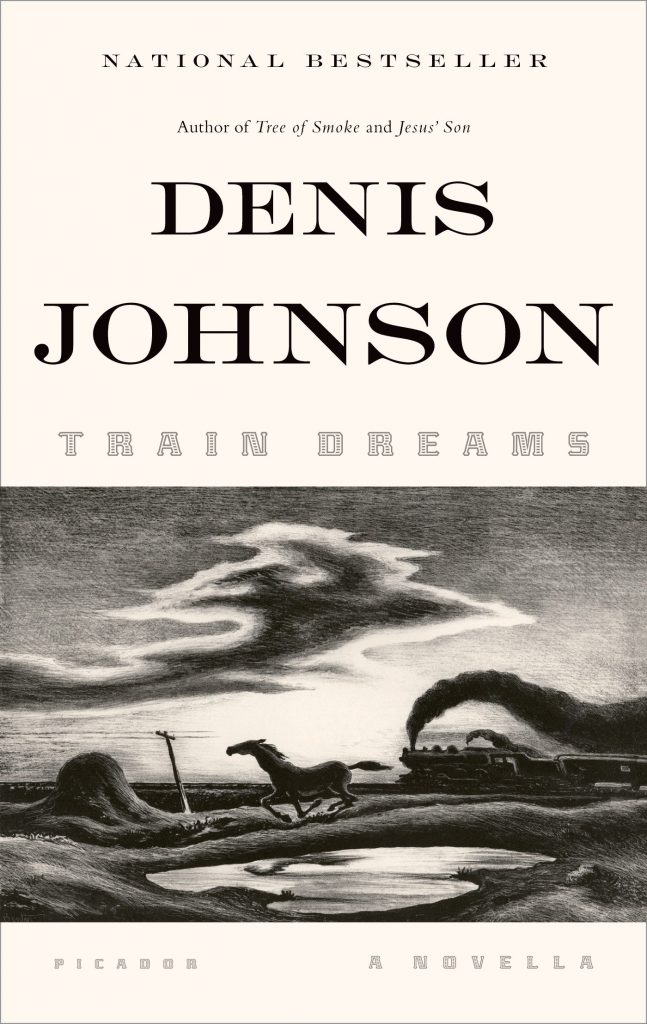 DENIS JOHNSON, TRAIN DREAMS (2011)
DENIS JOHNSON, TRAIN DREAMS (2011)
If I was tasked with proving that literary awards are a cruel joke and that life is nothing but a bleak and meaningless trudge toward the grave, Exhibit A would be what I have dubbed The Great Pulitzer Prize for Fiction Travesty of 2012. 2012 was, of course, the year the Pulitzer board (not the jury) decided that no book published in the previous twelve months merited the most prestigious honor in American letters, despite the fact that the trinity of finalists included Denis Johnson’s hallucinatory masterwork Train Dreams, as well as Karen Russell’s lushly brilliant debut novel Swamplandia! and David Foster Wallace’s unfinished opus The Pale King. (An explanation as to how this happened was proffered by novelist and 2012 jury member Michael Cunningham in a rather wonderful letter to the New Yorker in the wake of the non-decision). Train Dreams may well be the 21st century’s most perfect novella (he said, having of course read them all…). It’s the incantatory story of a turn-of-the-century logger and railroad laborer, Robert Grainier, who loses his family to a wildfire and retreats deep into the woods of the Idaho panhandle as the country modernizes around him. Johnson’s spare, strange, elegiac prose conjures a world that feels both ancient and ephemeral, full of beauty and menace and deep sorrow. As Anthony Doerr wrote in his New York Times review: “His prose tiptoes a tightrope between peace and calamity, and beneath all of the novella’s best moments, Johnson runs twin strains of tenderness and the threat of violence.” An American epic in miniature, Train Dreams is a visionary portrait of soul untethered from civilization, a man stoically persevering on his own hermetic terms in the face of unimaginable tragedy. A haunted and haunting reverie. –Dan Sheehan, Book Marks Editor
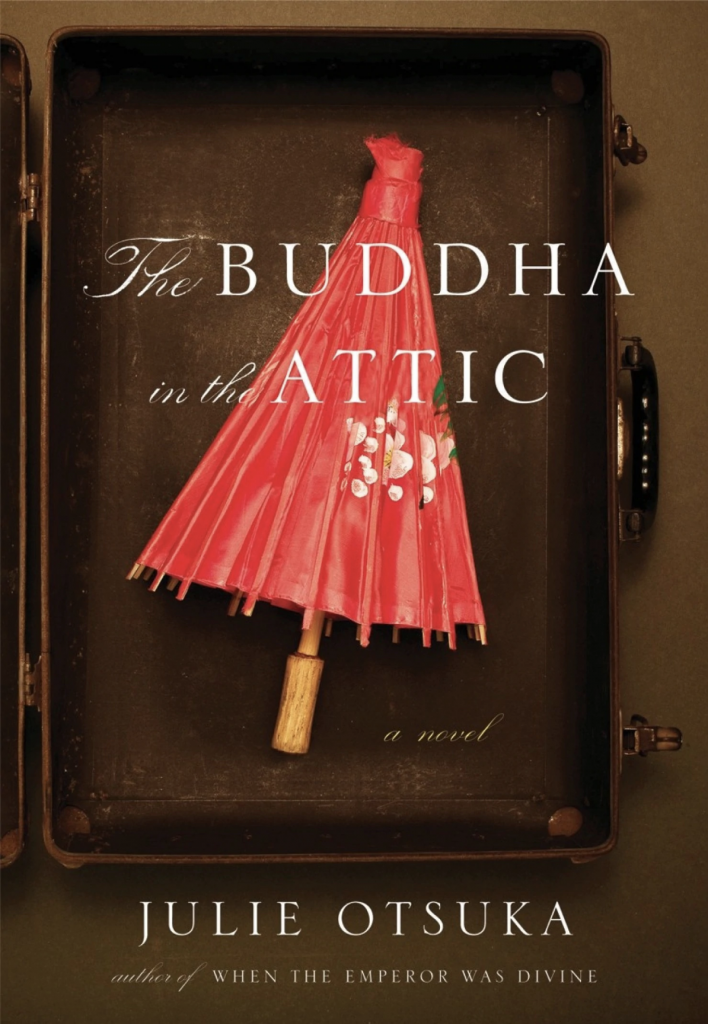 JULIE OTSUKA, THE BUDDHA IN THE ATTIC (2011)
JULIE OTSUKA, THE BUDDHA IN THE ATTIC (2011)
Julie Otsuka’s groundbreaking (and PEN/Faulkner Award-winning) Buddha In the Attic begins: “On the boat we were mostly virgins. We had long black hair and flat wide feet and we were not very tall. Some of us had eaten nothing but rice gruel as young girls and had slightly bowed legs, and some of us were fourteen years old and were still young girls ourselves.” This is how we are introduced to our narrators, a group of Japanese “picture brides.” We follow them as they immigrate to California. We watch helplessly as they meet the husbands they were promised to, as they attempt to assimilate to America and raise children across a cultural divide. The collective first person narration matches the subject matter beautifully; it mimics the immigrant experience, the way “others” are often seen as the same and the automatic camaraderie and safety we might find among those who share our stories. Slipping out of the shared “we” and “most of us” and “some of us,” Julie Otsuka creates a dizzying dislocation, a confusion of identity that serves the story well: “…unable to remember our own names, not to mention those of our new husbands. Remind me one more time, I’m Mrs. Who?” Her timing is impeccable. Just when you start to grow weary of the collective voice, for just a sentence or two, she’ll give us an intimate detail, an individual life, to hold onto, and it always catches you off guard when she does, like a rule broken: “The youngest of us was twelve, and from the eastern shore of Lake Biwa, and had not yet begun to bleed.” The specificity is heartbreaking. You can feel the intention behind every choice; so rarely does a book mesh style and subject so brilliantly. The most shattering bit comes at the end (SPOILER ALERT!)—when there is a sudden shift in the narrative. The “we” abruptly becomes the white Americans who are left to tell the story, after their Japanese neighbors are sent to internment camps. It’s chilling, and terribly accurate, the way their voices are literally taken from them in this story. I’ve re-read this novel many times, trying to understand how it can encompass such a wide scope of things. What Julie Otsuka has accomplished here is both an artful, intimate portrait of individual lives and a piercing indictment of history. –Katie Yee, Book Marks Assistant Editor
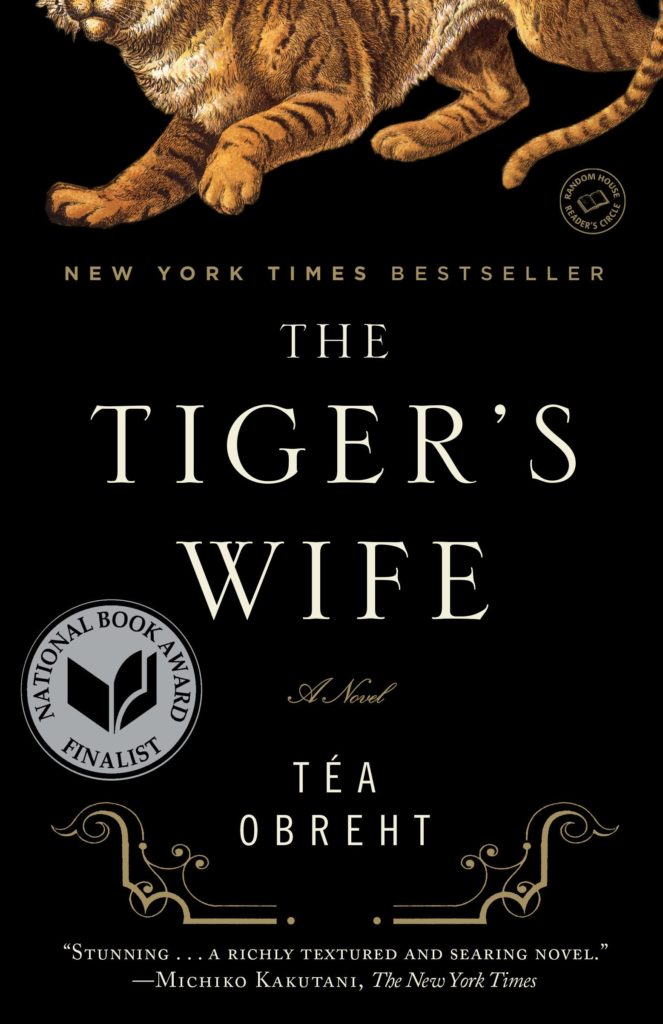 TÉA OBREHT, THE TIGER’S WIFE (2011)
TÉA OBREHT, THE TIGER’S WIFE (2011)
Although it came out in 2011, I read The Tiger’s Wife, the elegant first novel by Téa Obreht, only recently. I found it stunning, so perfectly moving on its many levels. Obreht’s protagonist and narrator, a young doctor named Natalia Stefanovic whose life is upended by the mysterious death of her beloved grandfather, is one of the most mellifluous, engrossing storytellers I’ve encountered in my life (she has learned well—her grandfather is one of the most mellifluous, engrossing storytellers she has encountered in hers). Her account remembers and aches for her loved one in a way that is both so poetic and relatable; she chiefly connects to his memory through a text, using his beloved copy of The Jungle Book to try to solve the puzzle around his last days, as well as his interior life. I also found The Tiger’s Wife to be very personal—Obreht was born in former Yugoslavia, and The Tiger’s Wife takes place in the Balkans, immediately after the war. My family, too, is from former Yugoslavia (where I spent much time, growing up), and though my life in America (and my age) has removed me from deeply experiencing the region’s turmoil firsthand, I marveled and cherished how Obreht’s book performs the acts of both collection and remembrance about the recent scarring and splintering of this region—this region which has historically been scarred and splintered so many times. (And it made me think of my own grandfather, another Yugoslavian storyteller, with whom I spent much of my childhood dreaming of animals.) “Collection and remembrance” are more than fluid themes of the novel, though—they comprise its methodology. Inspired by the format of The Jungle Book, perhaps, but also a culture that incorporates so many legends and beliefs (both Eastern and Western), Natalia begins interweaving fables and stories and flashbacks in her story—connecting an older, superstitious, and magical world and a bleak, modern, and disillusioned age. She does this as a device for the reader, but also because they keep unfurling in her own life as she learns her grandfather’s full story, and becomes, in a way, herself, inspired by the magic of it all. –Olivia Rutigliano, CrimeReads Editorial Fellow
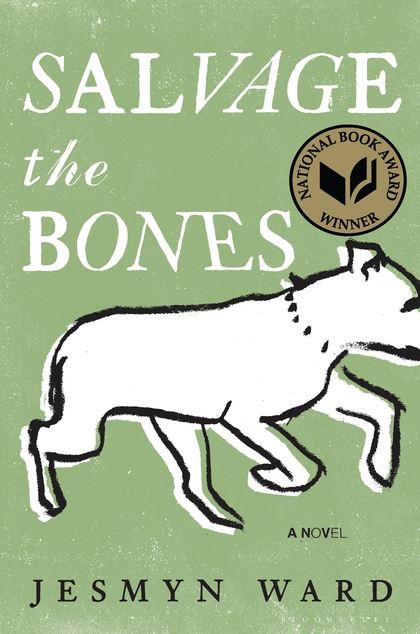 JESMYN WARD, SALVAGE THE BONES (2012)
JESMYN WARD, SALVAGE THE BONES (2012)
Most of what remains with me years after reading Jesmyn Ward’s second novel is impressionistic. One of the final images in Salvage the Bones is of the 14-year-old protagonist Esche’s father roughing out the initial impact of Hurricane Katrina in the attic of their flooded house. They’ve been separated from the family dog, China, and her litter of puppies; Esche’s dad resolves to stay there until China returns. Ward’s story is largely about caretaking; the slimness of the book and the small-scale—a father and his children prepare for a hurricane that people are warning about—belie the immensity of what Ward set out to do with this National Book Award-winning novel. We all have at least some sense of the disastrous Katrina response and what it revealed about government infrastructure and shortsightedness concerning communities of color in particular. Katrina is the costliest natural disaster in US history, and by the time Salvage the Bones was published, the long-term mental and material costs of the hurricane were in some ways easier to see, though also largely lost in an over-saturated media market. China and the puppies are not just decorations Ward includes, but in fact central to the identity of a poor black family in the fictional Mississippi Gulf town of Bois Sauvage. China’s “motherhood” is a source of strength for Esche, who is quietly pregnant herself; Esche’s older brother, Skeetah, hopes to one day sell the puppies as fighting animals—a decision motivated by economic desperation rather than callous detachment. Ward explicitly sought to remind readers of the dignity, suffering, and hopefulness of families of color amid one of the largest-scale disasters of our times. –Aaron Robertson, Assistant Editor
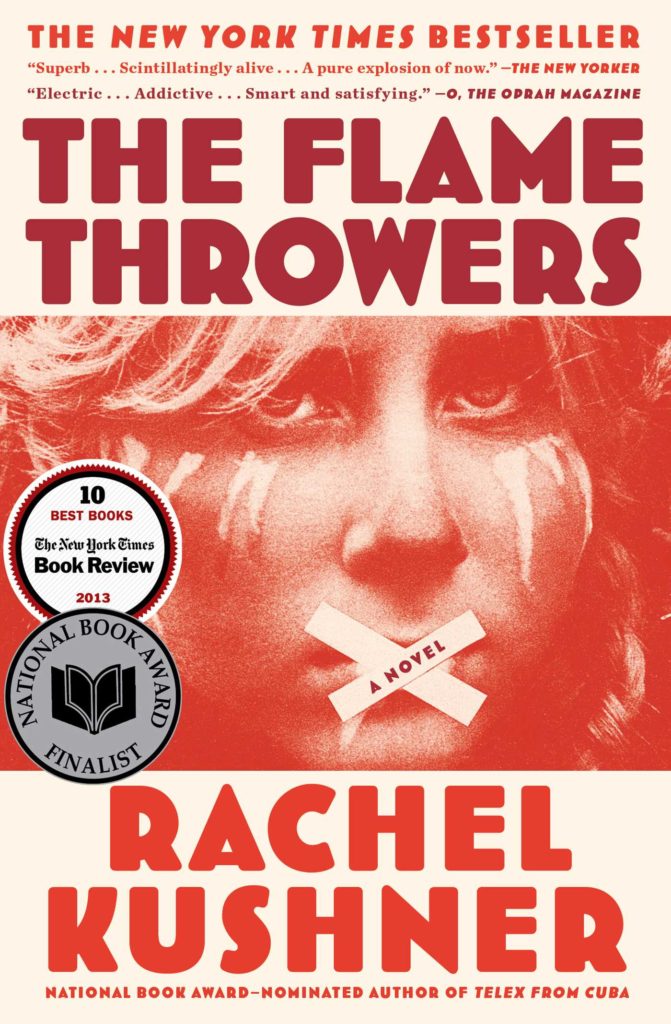 RACHEL KUSHNER, THE FLAMETHROWERS (2013)
RACHEL KUSHNER, THE FLAMETHROWERS (2013)
Rachel Kushner’s 2013 masterpiece has the advantage of being both epic in its historical sweep and highly, acutely specific in its characterization, observation, and ultimately, its aesthetic goals. The story is simultaneously too sprawling to do justice to in a few lines and disarmingly simple. A woman moves to New York City in the 1970s primed to create. She’s an artist. She’s swept up in the circles of other artists and finds herself perhaps too much under the sway or influence of an older man, a successful artist and the heir to an Italian tire/motorcycle fortune. The novel is a wash of conversations remembered, urges subsiding and returning, impressions. Reno, as the protagonist is nicknamed, travels to the western salt flats, crashes a motorcycle, challenges a speed record. Then she’s in Italy, adjacent to extreme luxury and wealth; next she’s in the streets, caught up in riots and a burgeoning activist culture on a collision course with her past. There is, throughout, an eerie sense of destiny, partly because we know she’s passing through important modern historical epics, but also because of the dreamlike grace of Kushner’s prose. “I was doing that thing the infatuated do,” Kushner writes through Reno, “stitching destiny onto the person we want stitched to us.” In other moments, the writing turns rock hard and visceral. A world spreads out before us, and before Reno, and we can’t help but follow the path ahead, knowing that it’s full of mistakes, cruelties small and large, and pain. But there’s also an electricity there. This is a book, ultimately, about art, that deeply human subject. –Dwyer Murphy, CrimeReads Managing Editor
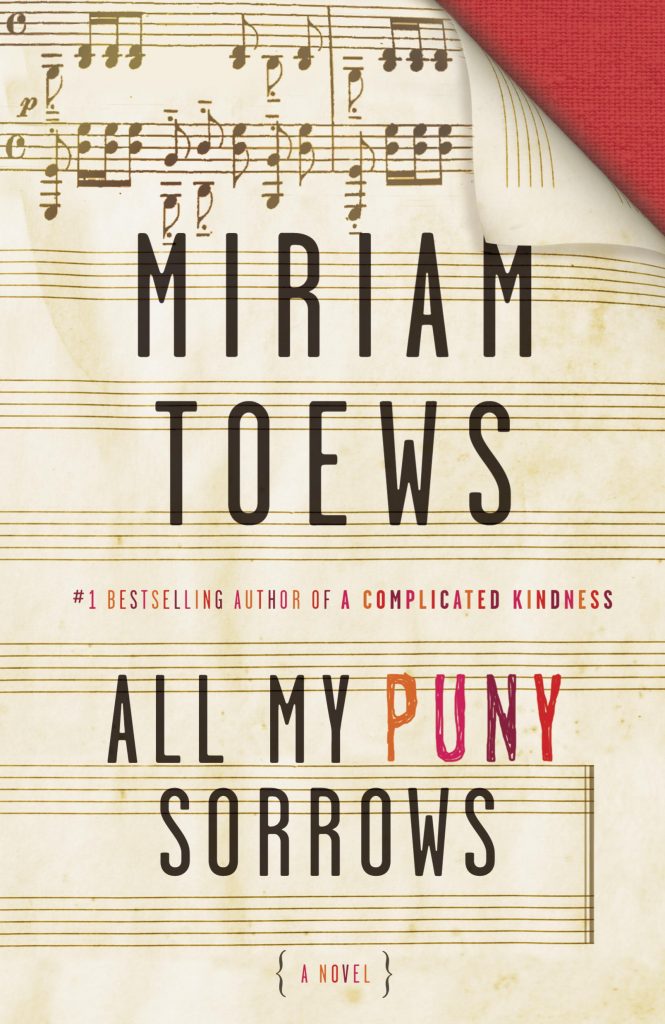 MIRIAM TOEWS, ALL MY PUNY SORROWS (2014)
MIRIAM TOEWS, ALL MY PUNY SORROWS (2014)
How rare is it to come across a novel that elicits a physical reaction from its reader? All My Puny Sorrows runs the gamut of emotions. Miriam Toews will have you laughing out loud one minute and sobbing on the subway the next. Her novel tells the story of Elf and Yoli, two sisters with an incredible bond despite living very different lives. By all external trappings, Elf is the successful sister. She is a world-renowned virtuoso pianist. She’s wealthy and happily married. Yoli is not any of those things. Instead, she is struggling with how to love someone who no longer wants to live. And so here we find ourselves, in the room with these two inseparable sisters in the aftermath of Elf’s suicide attempt. The way Miriam Toews describes her sadness is haunting: “Then Elf tells me that she has a glass piano inside her. She’s terrified that it will break. She can’t let it break. She tells me that it’s squeezed right up against the lower right side of her stomach, that sometimes she can feel the hard edges of it pushing at her skin.” (I read this novel months ago, and I still think of the glass piano often. It’s so memorable in its specificity! It’s so weird and unique that it could only have come from the mouth of this wonderfully well-rounded, surprising character.) But it’s not all sorrow! It hits all the notes. Shown through some flashbacks to the sisters’ Mennonite upbringing and cutting to their cruel present, the intimacies of their relationship are a saving grace, a sigh of relief. Miriam Toews has an ear for dialogue. Elf and Yoli talk like flesh-and-blood sisters. The details are spot-on. At some point, they speak of their plans to “chop wood, pump water, fish, play the piano, sing together from the soundtracks of Jesus Christ Superstar and Les Miserables, re-imagine our pasts, and wait out the end of the world.” There’s a version of this story, painted with less carefully crafted strokes, that comes out cliche. But Miriam Toews is a pro at teasing out the details that make the story full and unexpected. –Katie Yee, Book Marks Assistant Editor
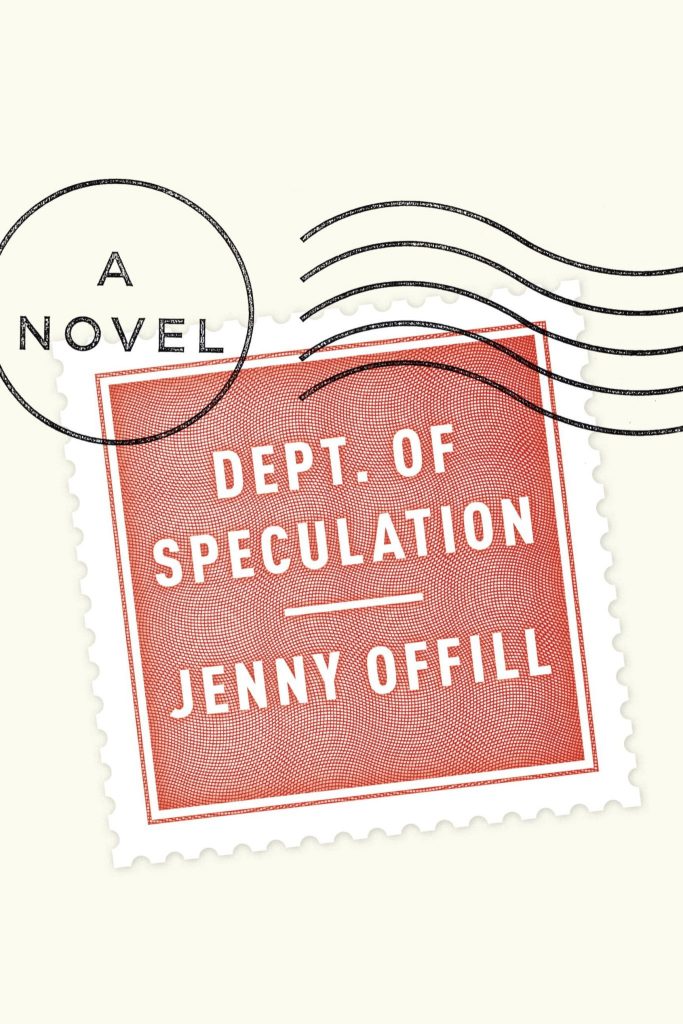 JENNY OFFILL, DEPT. OF SPECULATION (2014)
JENNY OFFILL, DEPT. OF SPECULATION (2014)
It is possible to read Jenny Offill’s second novel, Dept. of Speculation, in a day. In fact, it is more difficult not to, as you will not want to stop reading once you’ve started. The first time I read it, I remember being dazzled by the form: a progression of short paragraphs, sometimes continuous with those around them, sometimes ostensibly standalone, each one a jolt of intelligence or feeling. Here is the one everyone quotes:
My plan was to never get married. I was going to be an art monster instead. Women almost never become art monsters because art monsters only concern themselves with art, never mundane things. Nabokov didn’t even fold his own umbrella. Vera licked his stamps for him.
The novel is filled with anecdotes like these, and also sayings, or literary quotes, like this one, which I have written down in my notebook every time I have read this book:
What Rilke said: I want to be with those who know secret things or else alone.
The second time I read it, I was heartbroken by the story, every bit of it: the writer who sacrifices (too much?) for her family, the wife whose husband has strayed, the woman rebuilding. It is the quality of mind Offill creates that makes this novel so extraordinary, that makes me want to live inside it.
The third time I read it, I realized that this is one of the few novels that I find both formally exciting and emotionally devastating—in a good way. Most writers can pull off one or the other, but Offill does it right: she uses the form to slay you good.
PS: For those, like me, who have read this book too many times already, I am pleased to inform you that Offill’s forthcoming Weather is just as brilliant and wonderful as Dept. of Speculation, but it swaps out marriage and swaps in climate change/existential malaise as its main concern, which makes it exactly the kind of book we need right now. –Emily Temple, Senior Editor
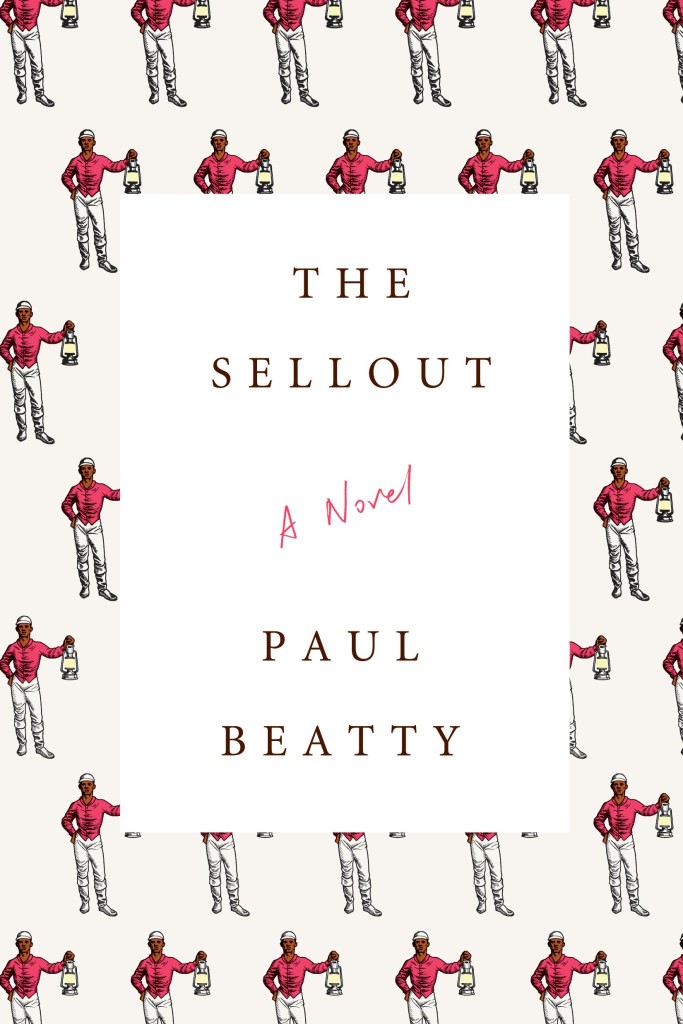 PAUL BEATTY, THE SELLOUT (2015)
PAUL BEATTY, THE SELLOUT (2015)
It’s tough to sell me on a novel that’s not funny. To me, fiction without humor is missing an essential part of the human experience. Paul Beatty’s Booker Prize-winning masterpiece is one of the funniest—and most human—novels I’ve ever read. Not only that, it made me feel entirely vindicated for insisting upon comedy. The Sellout is so sharp you might not notice it’s cut you until you’ve already feeling faint. It’s a combination of laugh-out-loud comedy, precision social satire (rooted in a deep understanding of history), and literary tour de force. It’s so good it made me use the phrase “tour de force.” The mission of The Sellout’s narrator, a black man, is to reintroduce (official) segregation to his rural neighborhood within inner-city Los Angeles after it is mysteriously disappeared from the map. The novel fittingly begins with the narrator lighting a joint in the halls of the Supreme Court, where his re-segregation endeavor landed him. As Kevin Young wrote in his review, “Beatty takes the same delight in tearing down the sacred, not so much airing dirty laundry as soiling it in front of you.” But The Sellout celebrates as much as it torches. It is, in addition to being one of the great satirical novels of the decade, and maybe of all time, a celebration of blackness in an allegedly post-racial era (keep in mind, this was 2015). –Jessie Gaynor, Social Media Editor
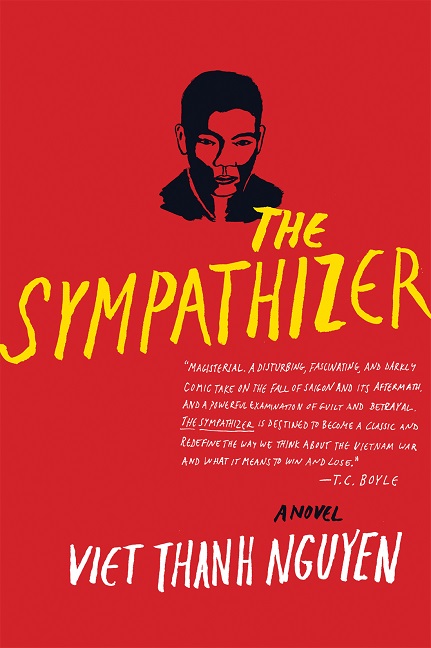 VIET THANH NGUYEN, THE SYMPATHIZER (2015)
VIET THANH NGUYEN, THE SYMPATHIZER (2015)
As a novel, The Sympathizer is a roiling, darkly comic, propulsive literary thriller set in the immediate aftermath of the Vietnam War, as a North Vietnamese mole keeps watch on the exiled South Vietnamese government in Southern California—it is compulsive reading, arresting in its language, unforgettable in its imagery. But it is more than that. By simply writing the words “Vietnam War” I am able to conjure an entire American mythology, the 40-year cultural byproduct of so much not-quite propaganda/not-quite art: long-haired protesters in the streets, Rustbelt grunts wading through steaming jungles, a flock of juddering choppers against an enormous foreign sun, broken men returning to a country that does not want them… This is the “American” version of the war, a story we’ve told “ourselves” that, while not particularly flattering, is as narrow and myopic as any campfire epic.
So let’s try this: The Sympathizer is an American novel about an American War, a devastating and needless conflict that created hundreds of thousands of refugees, new Americans (we were all new here, at some point) who found a home in the empire that displaced them, and who’ve made it better. Our cultural account of the American war in Vietnam has never been fully “ours” because it has neglected and actively excluded the perspectives of these refugees and their descendants. The Sympathizer is a vital work of art that begins to redress that imbalance. –Jonny Diamond, Editor in Chief
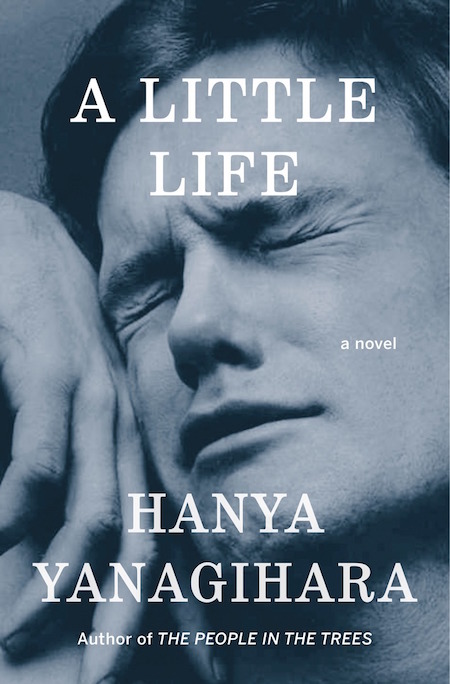 HANYA YANAGIHARA, A LITTLE LIFE (2015)
HANYA YANAGIHARA, A LITTLE LIFE (2015)
A Little Life is a polarizing book. There are those who love it, who hate it, and who spend their entire reading experience vacillating between these extremes. As one of the book’s advocates, even I experienced moments when I felt like throwing the book across the room. But the brilliance of this book is in the unbearable suffering it causes its characters; if the Bible was about how to survive the arbitrary punishments of angry Lord to such figures as Job, then A Little Life is about how to stay friends with Job, without forcing Job to, well, get better.
A Little Life follows four college friends through the ups and downs of their lives in any-time New York City, but is primarily focused on Jude, the survivor of an unimaginable childhood, grimly detailed in the most horrifying sections of the book. (While many would find the depth of suffering in A Little Life to be implausible in its extremes, Hanya Yanagihara, at a bookseller meet and greet I attended, said she’d received plenty of mail since publication that would suggest otherwise.) All this suffering sets Jude up for a central conflict between his friends, who want him to be happy, and his own understanding that the best he can aim is not to be happy but instead to just…be.
To me, the plausibility of the text was neither here nor there. My respect for the novel is more grounded in the book’s return to 19th century style emotional narratives, as opposed to the hyper-masculine modernity of mid-century America that insisted on short sentences from the perspectives of nascent psychopaths (yes, that was a jibe at Hemingway). It’s also a turn away from the usual misery memoir’s happy healing, in favor of a grimly realistic portrayal of the long shadow of trauma. A Little Life gives me all the feels, and yet provides no easy answers, and to me, that’s what makes for good literature. –Molly Odintz, CrimeReads Associate Editor
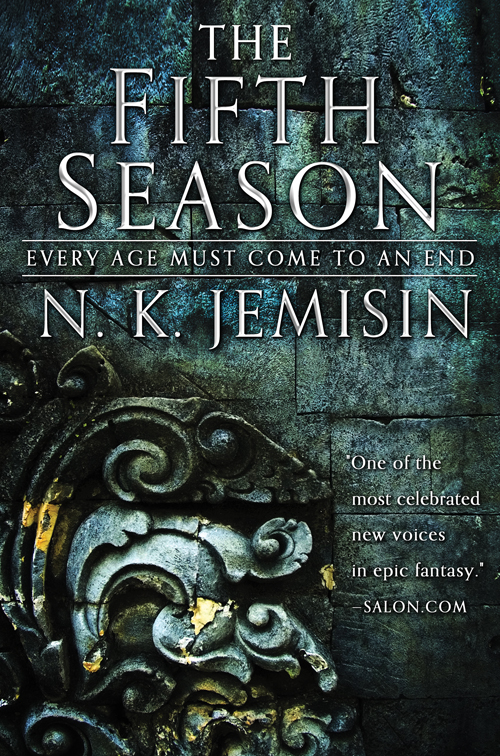 N. K. JEMISIN, THE FIFTH SEASON (2015)
N. K. JEMISIN, THE FIFTH SEASON (2015)
It’s not always possible to tell that a novel is great while you’re reading it. I mean, obviously you can usually tell if you like something, but to for me, you only know that a novel is capital-g Great when you find yourself, weeks or months or years after the first reading, still thinking about it. Most books, even delightful and brilliant ones, do not pass this test, at least for me. But I have thought about N. K. Jemisin’s The Fifth Season (and its two sequels, The Obelisk Gate and The Stone Sky) at least weekly since I read it a few years ago.
Perhaps it’s unfair. The novel imagines an alternate Earth that is periodically torn apart by apocalyptic weather—like suffocating ash, acid clouds, fungal blooms, mineral-induced darkness, magnetic pole shifts—that lasts for decades at a time, often threatening to wipe out humanity entirely. So you can see how it might come to mind these days.
But I also think about it for its incredible world-building, its unfortunately relevant cultural critique (caste systems, power hierarchies, fear and oppression of the other or unknown, particularly when that unknown other has dreamed-of skills), and its unforgettable characters, particularly, of course, Essun, with all her anger and fear and strength and softness and power. I love her.
And hey, if you don’t want to take my word for it, consider that all three books in the Broken Earth series won Hugos. All three. –Emily Temple, Senior Editor
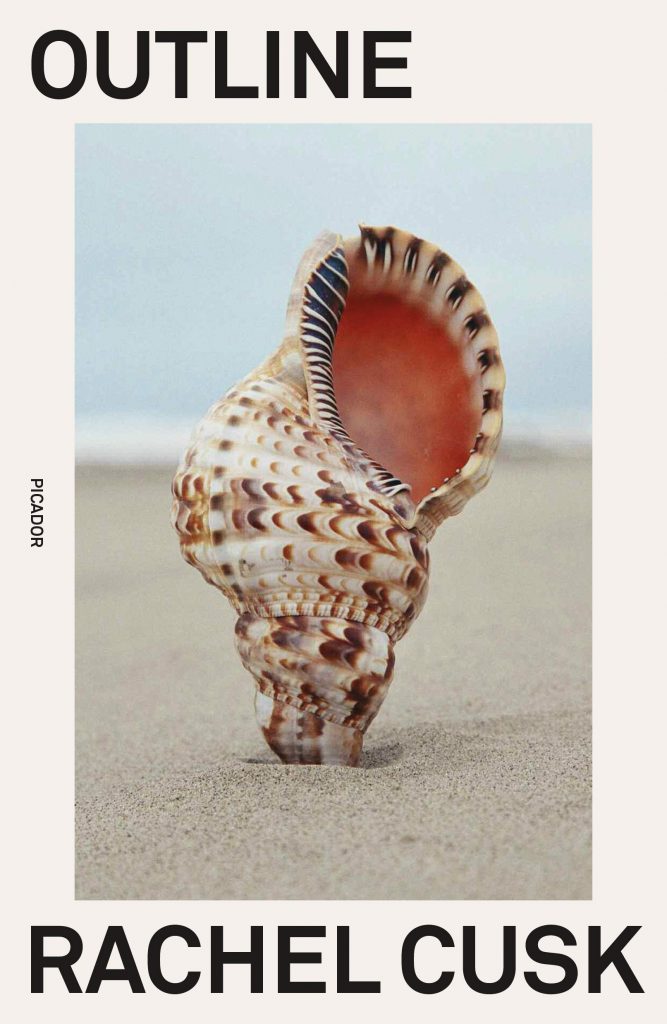 RACHEL CUSK, OUTLINE (2015)
RACHEL CUSK, OUTLINE (2015)
There is something about the texture of Rachel Cusk’s prose in Outline (and in the novel’s two follow-ups, Transit and Kudos) that feels different from anything you’ve ever read before. It’s ostensibly a novel about a woman teaching creative writing in Athens, but it’s really just a series of conversations—importantly, conversations as she remembers them, filter after filter. There’s no real plot, and I’m at a loss to fully describe why the novel is so captivating. Probably, it’s because, as Heidi Julavits put it, it is “lethally intelligent . . . Spend much time with this novel and you’ll become convinced [Cusk] is one of the smartest writers alive. Her narrator’s mental clarity can seem so hazardously penetrating, a reader might fear the same risk of invasion and exposure.” That will do it.
Once, on the subway, I saw a young woman reading Transit and a young man reading Outline, both in the appealing Picador editions. They were standing very close, but they were facing away from one another, and didn’t seem to be together. It took all I had not to stand up and tug on their sleeves—not only because of the perfect meet-cute, but because these books feel like a kind of shibboleth, that rare bit of artistic consumption that might actually tell you something about a person, and how their mind works, and the ways to access their heart. I got off before either of them. I hope they turned around and found each other. –Emily Temple, Senior Editor
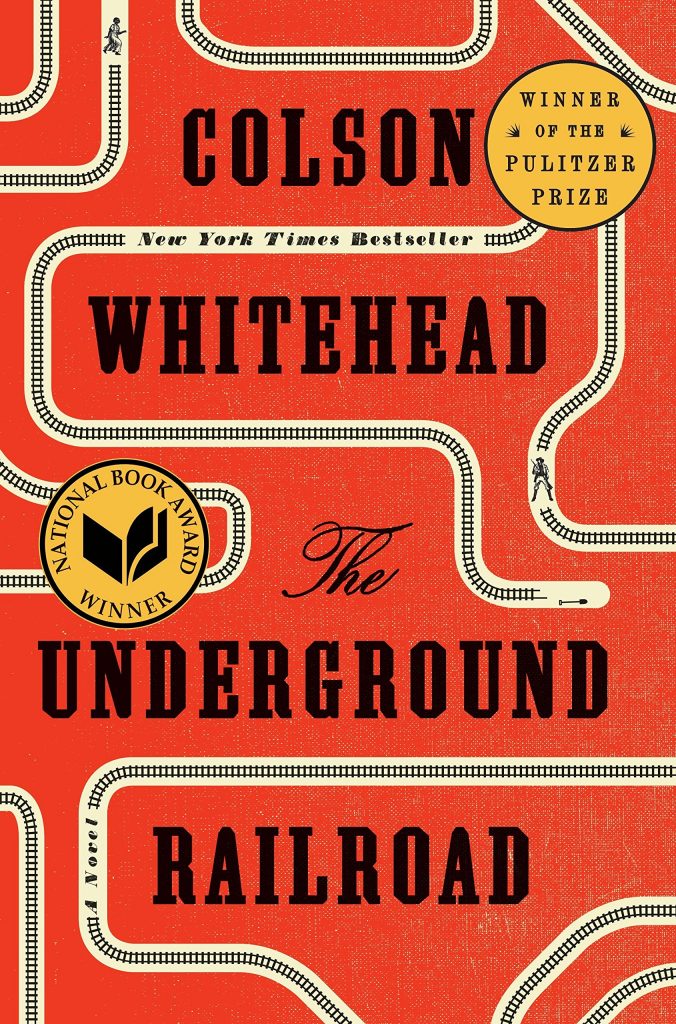 COLSON WHITEHEAD, THE UNDERGROUND RAILROAD (2016)
COLSON WHITEHEAD, THE UNDERGROUND RAILROAD (2016)
Colson Whitehead’s 2016 novel is, as they say in the business, a shoo-in for this list. It won the Pulitzer, the National Book Award, the Arthur C. Clark Award, and the Andrew Carnegie Medal for Excellence. It was longlisted for the Booker Prize. It was also a huge bestseller, of course, and achieved near-unanimous praise from critics. Oprah picked it for her book club. Barry Jenkins is adapting it into a television show. It doesn’t get much better than that.
But, why, you might ask, if by some strange accident you have not already read it yourself? Well, it’s accessible, entertaining, and character-rich, and it also reminds us of some uncomfortable but necessary truths about America and its history. (Though not, mind you, that there was literally a coal-burning railroad underground during the 19th century—I mean, first of all, where would the smoke go?) It has the intensity, immediacy, and high stakes of any escaped slave narrative—literally life or death—which makes it a captivating page turner, but it’s also written by the talented and adaptable Colson Whitehead, who seems to be able to tackle any genre and style, from historical fiction to bildungsroman to zombies, and make it look easy. All we can ask is that he keeps on doing it. –Emily Temple, Senior Editor
 ADAM HASLETT, IMAGINE ME GONE (2016)
ADAM HASLETT, IMAGINE ME GONE (2016)
This was one of those novels I had to be told multiple times to read. I just didn’t want to read a sad book about depression! And to be fair . . . it is sad. But even so, I was wrong to resist, and so are you if you missed this one.
Adam Haslett’s second novel is a full and frank portrait of a family and the mental illness that besieges its members—some genetically, others merely experientially. It’s no more complicated than that—there’s no hook, no high concept twist, just the story of a family, told over the years and through the lens of each member: John, Margaret, and their (adult) children Michael, Celia, and Alec. Michael is the most intense narrator, and the one who has inherited his father’s “beast,” though in him it is changed into an obsessive, endlessly riffing master. In fact, Michael’s writing shows up quite a bit in the novel, and it’s one of the book’s best parts—a direct lens, as it were, into a highly unusual mind.
Throughout, the writing is perfectly calibrated, shifting in tenor between characters but always elevated, even lovely. But the most impressive feat is the empathy with which Haslett unravels this family, and the tenderness with which he writes about love in all of its forms. This is a striking novel, and one of the best examples in recent memory of a certain literary mode: quiet, moving, immersive, beautiful. –Emily Temple, Senior Editor
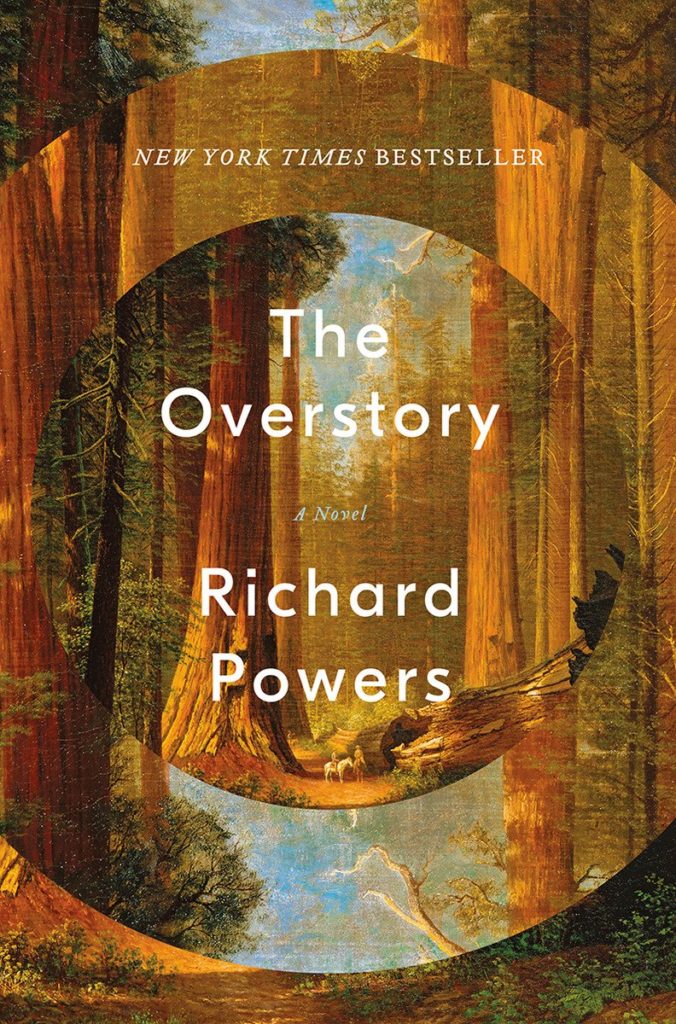 RICHARD POWERS, THE OVERSTORY (2018)
RICHARD POWERS, THE OVERSTORY (2018)
Much has been made of Richard Powers evocation of arboreal deep time. As ecologists and botanists and field biologists having been trying to tell us for decades, trees are alive in ways far closer to what we think of as sentience than anyone thought.
And while they can certainly be characters in bestselling narrative nonfiction (Peter Wohlleben’s The Secret Life of Trees comes to mind), can they be characters in a novel? Yes and no. While Powers does introduce several recurring tree characters—a landlocked and lonely chestnut that measures the generations of a single family, a monumentally giant redwood that’s home to eco activists—the lasting importance of this elegiac epic of climate collapse will be the way it takes environmental activism seriously. Powers’ human characters are heartbroken about the destruction of the planet, and they act upon it in all the messy, complicated ways one might expect from non-trees; but they are taken seriously—they are not quirky Franzonian extras, sprinkled through the narrative for a little radical spice. Here is a novel that contains within it layers of sadness and quiet hope; its concerns are ours, its characters are us. Deep time for dark times. –Jonny Diamond, Editor in Chief
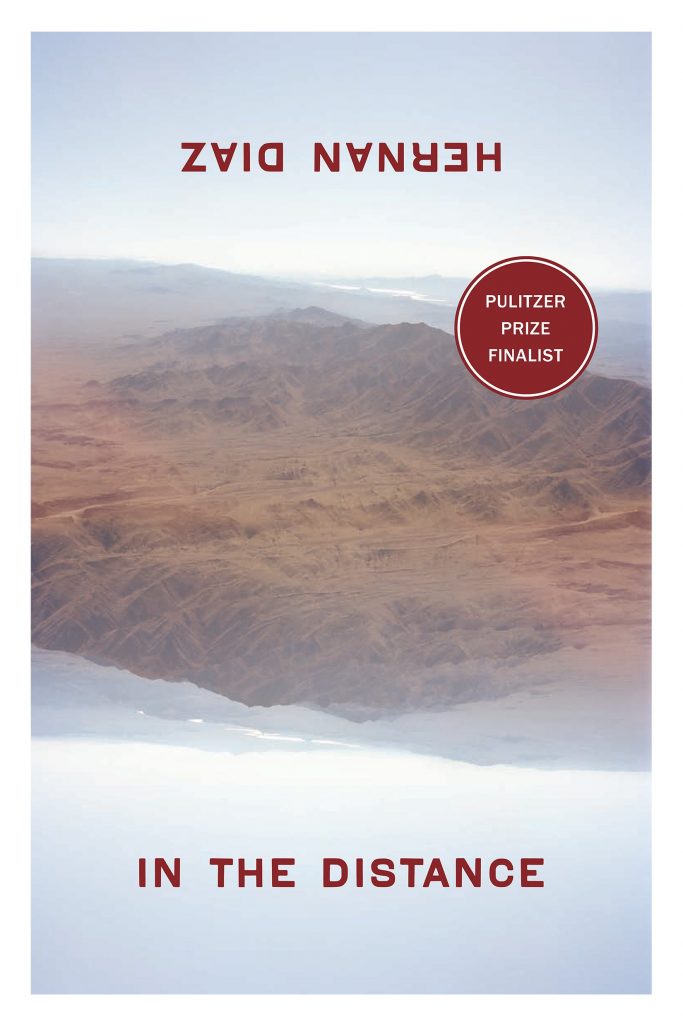 HERNAN DÍAZ, IN THE DISTANCE (2018)
HERNAN DÍAZ, IN THE DISTANCE (2018)
From the very beginning of Hernan Diaz’s slyly Western noir we are lashed to its main character, an adolescent Swedish immigrant named Hakan, as if to the mast of a doomed ship: we see what he sees, struggle through the same harsh weather; we drift through his grim Sargassos, desperate for that ribbon of land on the horizon that will grant reprieve. Diaz’s close third person shadowing of Hakan makes his felt dislocation ours: we know he has been separated from his brother on the way to New York, we know he has never seen a city (at one point he almost disembarks at Buenos Aires, thinking it his final destination), but we don’t really know where he is, or where he’ll end up, or why.
Though painstaking in its historical detail (without succumbing to the obsessive’s need to show off) In the Distance has the feel of a very contemporary story, capturing as it does the struggle and the will at the heart of migration, along with the cruelties that inevitably surround it. And though Diaz clearly has a copy of the Cormac McCarthy family bible, its brimstone and blood, there is tenderness buried at the borders of this novel, just waiting for a little rain to draw it to the surface. –Jonny Diamond, Editor in Chief
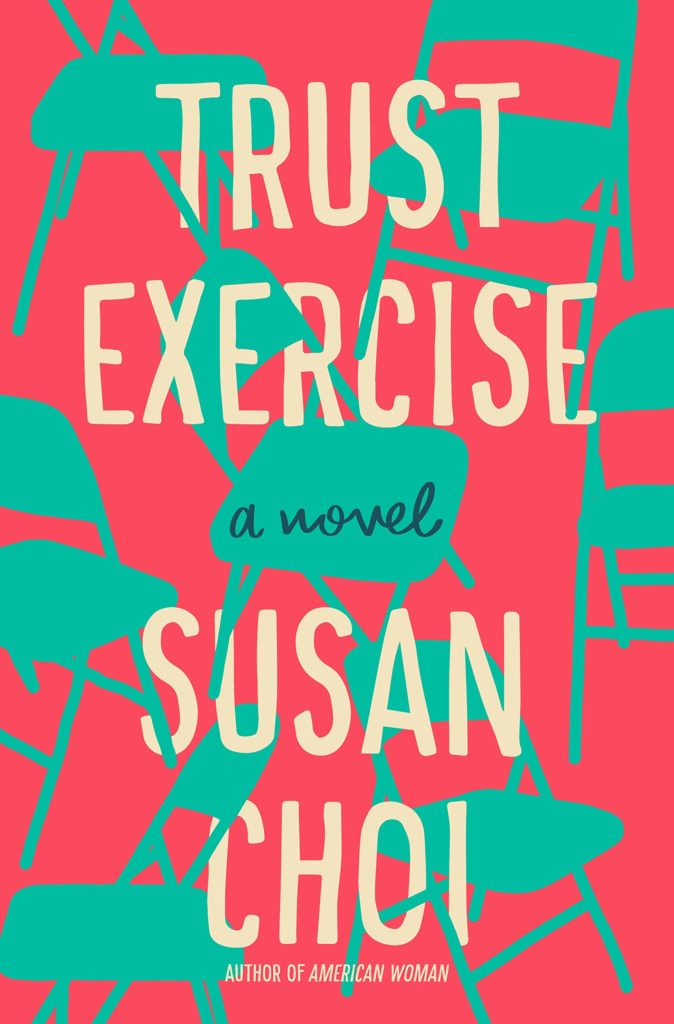 SUSAN CHOI, TRUST EXERCISE (2019)
SUSAN CHOI, TRUST EXERCISE (2019)
A finalist (and in my books, at least, the front runner) for this year’s National Book Award, Susan Choi’s fifth novel Trust Exercise is a novel in three parts. There’s a lot of concern over not ruining the twist that comes in part two (and to a lesser extent, part three), but it’s impossible to describe quite why this is one of the best novels of the decade without giving it away. So if you haven’t read it yet, stop reading this and just trust that the central hinge is perfect, and that you should go read it. Now, the spoilers. The first section of the novel begins at a performing arts school in the 1980s, a love story between Sarah and David, friends from opposite sides of the tracks, that suffer through their teenage years, their drama amplified by being sensitive, ambitious theater kids. The shift in part two is that this first story is, in fact, the story within the story, a book written by an adult Sarah (who is not actually called Sarah), being read now by a secondary character from the first story, someone named Karen (who is likewise not actually called Karen). It is an incredibly bold, somewhat shocking twist, resulting in an unraveling that’s pure craft. In The New York Times Book Review, it was labeled unlovingly a “bait and switch,” while Dwight Garner (in the same paper) wrote that it made the book “burn more brightly than anything [Choi’s] yet written.” The second part of the novel is a revenge story too, with carefully built suspense (and a theatrical play with an actual gun), while the third dovetails perfectly, if a bit expectedly, into the future of not-Karen’s life. The premise of Trust Exercise is that teenagers are real people, not just unformed adults, with real concerns and emotional intelligence; they, too, are worthy of great literature. –Emily Firetog, Deputy Editor
 ANNA BURNS, MILKMAN (2019)
ANNA BURNS, MILKMAN (2019)
Anna Burns’s Milkman requires a little commitment. I don’t particularly hold to the idea that some books are “easy” while some are “hard” (or that there is particular virtue in either case) but Burns’s unspooling story of a young woman in Belfast during The Troubles ask of its readers that they be good listeners, that they might have the patience to let the novel’s speech-driven rhythms carry them along, its endless clause-laden sentences tugging like a current toward some unknown destination.
The novel doesn’t specifically locate us in Belfast, nor does it give us an exact era; in fact, the only character that’s ever granted a name is the “Milkman,” an IRA higher-up who may or may not be courting the main character, who’s something close to 18. Already deemed odd for her habit of walking the (dangerous) streets with her nose in a book, the attentions of the older man—he shows up at random in his white van—has people talking (but always just out of earshot, the curtains quickly drawn). Milkman is all menace and mood, its ambiguities like dark corners, places of concealment, its violence latent throughout, ready to explode.
***
Dissenting Opinions
The following books were just barely nudged out of the top twenty, but we (or at least one of us) couldn’t let them pass without comment.
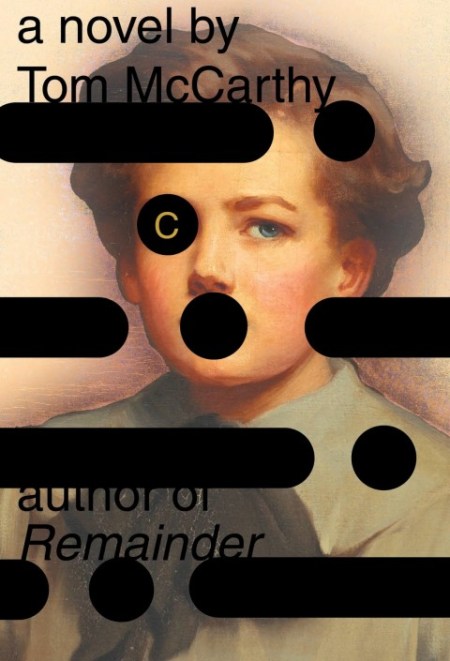 TOM MCCARTHY, C (2010)
TOM MCCARTHY, C (2010)
Listen, haters. I know it’s not as good—or at least as pure—as Remainder, which is a nearly perfect novel. But I loved this book for its sheer postmodern ambition, its obsessions—with hearing and mishearing, communication and miscommunication, associative thinking—and its arch coldness. It seems McCarthy, who let’s not forget is the general secretary of the “semi-fictitious” International Necronautical Society, which is “devoted to mind-bending projects that would do for death what the Surrealists had done for sex,” is playing some sort of trick, or set of tricks, on us, and maybe on literature itself, and well, unfortunately I am the sort of reader who appreciates that.
After all, the novel, which is ostensibly about a troubled and troublingly blank young man named Serge Carrefax, building radios and dropping bombs as the twentieth century begins, is so weird, and so much, and so clearly about language and what we make of it, and what it’s for. In her review of the novel for the New York Times, Jennifer Egan wrote that McCarthy “withstands the temptations of emotional plotting and holds out instead for something bigger, deeper, more universal and elemental.
C is a rigorous inquiry into the meaning of meaning: our need to find it in the world around us and communicate it to one another; our methods for doing so; the hubs and networks and skeins of interaction that result. Gone is the minimalist restraint he employed in Remainder; here, he fuses a Pynchonesque revelry in signs and codes with the lush psychedelics of William Burroughs to create an intellectually provocative novel that unfurls like a brooding, phosphorescent dream.
To be fair about the response of the critics, Michiko Kakutani hated it, calling it “disappointing and highly self-conscious” and finds his “carefully manufactured symbols and leitmotifs . . . to be more gratuitous than revealing.”
Which is perfectly reasonable. I, however, will continue to delight in its self-conscious, hyper-intellectual handwringing. I love that sort of thing. –Emily Temple, Senior Editor
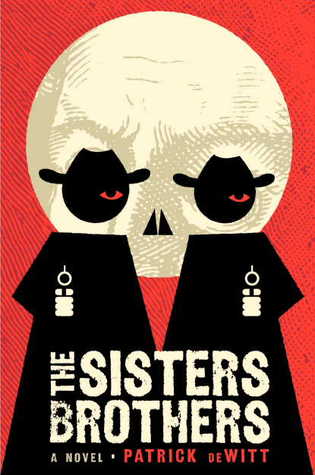 PATRICK DEWITT, THE SISTERS BROTHERS (2011)
PATRICK DEWITT, THE SISTERS BROTHERS (2011)
Patrick DeWitt’s The Sisters Brothers is a perfect Western, which is why it’s so startling that it’s a comedy about a protracted existentialist crisis. The Gold Rush-era story of two bounty-hunters, the philosophical Eli and his rowdier, more impulsive brother Charlie, it unfolds slowly as they head from Oregon to California to kill a prospector-alchemist named Hermann Kermit Warm at the behest of a shady figure known as the Commodore. Eli doesn’t exactly love what they do for a living (he’d rather work in a shop, he thinks), while Charlie doesn’t question it. As they make their way south, in a picaresque-fashion they stumble from one (often gritty) misadventure to the next, and eventually wind up teaming up with Warm when they finally find him. The best part of the novel is the narration—Eli is the ambivalent moral compass normally absent from Westerns, a kind of extreme normalcy and humanity amidst a desolate and unforgiving landscape and livelihood. He is ever-loving towards his cruel and reckless brother, a little anxious about his weight, and gets extremely excited when he purchases a toothbrush for the first time. Charlie, on the other hand, is scary—and you’ll spend pages worrying that the complicated, loving bond between them will be Charlie’s to selfishly, stupidly break. Eli’s sincerity is what keeps everything afloat, as well as makes it all feel so precarious.
His considerate, soft-spoken-ness is jarringly interrupted by unsettling (usually gruesome, sometimes disgusting) moments of gore—sometimes violence, sometimes other nauseating things. The imagery is stunning—there are passages here and there, both horrifying and not, that have stuck with me since I read it. There is, I should warn you, some extremely tough, hard-to-read violence against horses (usually something that will compel me to burst into tears and stop reading/watching the thing at hand, but I was so interested in the story that still cried but plugged on). It’s elements like this that recall how, for all its creativity and charm, The Sisters Brothers is actually extremely sad: a wrenching evocation of a bitter moment in the history of mankind, as it tries and fails to make progress. On a different note, it also has the single best title of a fictional work, possibly ever. In my opinion. –Olivia Rutigliano, CrimeReads Editorial Fellow
 CLAIRE MESSUD, THE WOMAN UPSTAIRS (2013)
CLAIRE MESSUD, THE WOMAN UPSTAIRS (2013)
“How angry am I? You don’t want to know,” begins Claire Messud’s novel, in a sure hook if I’ve ever seen one. If I could, I would quote the entire first page because it establishes one of the most powerful and memorable feminist voices I have ever read in fiction: urgent and chillingly true. The quietly seething protagonist of The Woman Upstairs, Nora Eldridge, is a teacher who has sidelined her art, because she is a rule-follower who fears risk and uncertainty. She is unmarried, single, without kids; intelligent, experienced, and incisive enough to pierce societal facades and expose the enduring gender conventions, stereotypes, and pressures that imprison women. Thus, Messud’s titular allusion to Bertha Mason, the first “madwoman in the attic.” Nora’s predictable life is enlivened by the arrival of the worldly Shahids, a family of famous Italian artist Sirena, Lebanese academic and intellectual Skandar and young, well-mannered Reza. In each of the Shahids Nora glimpses the revival of a life she thought to be long lost. With their flattery and tacit permission she returns to her art, sharing a studio with Sirena who is preparing for an upcoming art show in Paris; she engages in intellectual discussion with Skandar (though he talks and she mostly listens); and as she gets to know Reza, finding him the perfect child, she wishes she were his mother. She is filled with promise, until they betray her. Messud yields Nora’s confessional, vehement voice from beginning to end, lending the novel the pacing and tension of a psychological thriller. In The Woman Upstairs Messud’s signature intellectual tone is invigorated by the unmoored passion of her protagonist, who grapples with the choices of her past and the promise of her future, burdened with the question of determinism as she is tormented by self-doubt and the sense of having no control to alter her fate. Messud has struck the finest balance between showing and telling: she has delivered one version of the tale of the modern woman that no one can ignore. –Eleni Theodoropoulos, Editorial Fellow
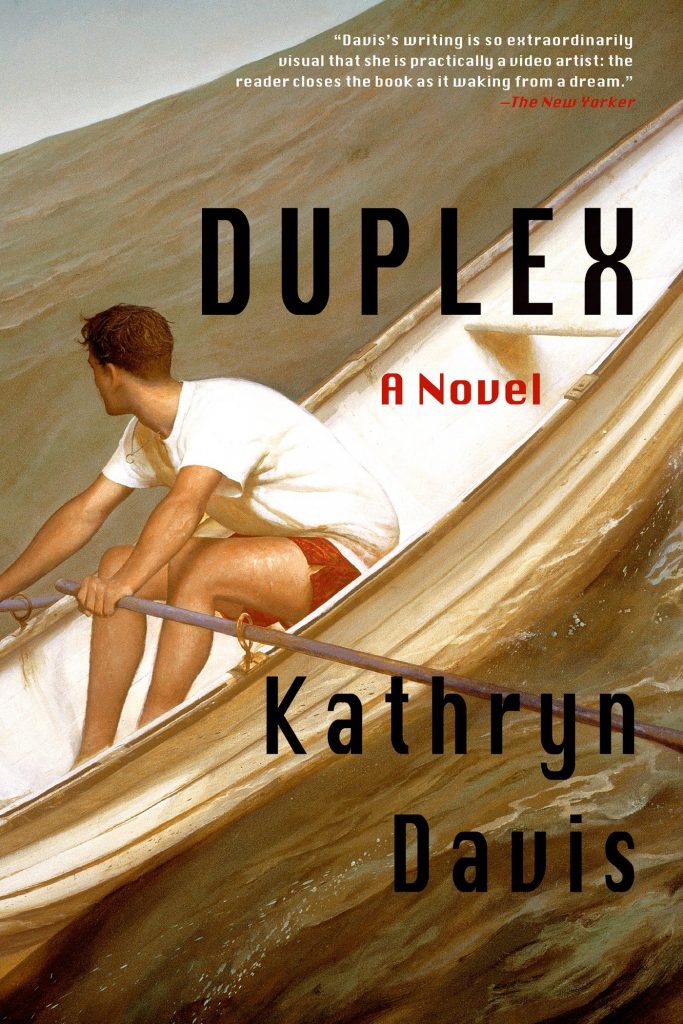 KATHRYN DAVIS, DUPLEX (2013)
KATHRYN DAVIS, DUPLEX (2013)
It’s difficult to explain the phenomenon of reading this novel for the first time, though Lynda Barry does it as well as anyone could in the opening of her review for The New York Times:
The chapter is called “Body-without-Soul,” the book is called Duplex, and you’ve lived in a duplex so you think, “Oh, I know what this book is about.” . . . And then you read this: “The car was expensive and silver-gray and driven by the sorcerer Body-without-Soul.” And you find out not only does Miss Vicks know him, they are romantically involved, and he can make things vanish or “vibrate at unprecedented frequencies,” including her privates, he can sow fear inside anything, and then you read that he can fit his entire hand inside her. Time stutters. What? His entire hand what?
You read the phrase four times, trying to catch up, the way you tried to catch up when you were a kid and Henry, the teenager from next door, told a bunch of you a story about his finger and a girl. Finger? Girl? What? Then a flood of understanding horrified you, shamed and excited you, trailed you back into the house to the kitchen where dinner was ready, where your chicken potpie was waiting to be pierced with your fork and you stared at it.
Because the thing is, you don’t know what this book is about. I could not tell you what this book is about, because this book is an experience—closest to a dream, maybe, or a memory. An enchantment. Tom Bissell called it “a coming-of-age-meets-dystopian-fantasy-meets-alternate-reality novel, or maybe an Ionesco-meets-Beckett-meets-Oulipo novel.” It is deadpan, episodic, unrelentingly bizarre, continually surprising, and gorgeously written. It considers teenage girls deadly serious, and deadly seriously. It is a suburban American fantasy of the highest order—though Davis herself might balk at this description. “I hope that what I write is about as “realistic” as a piece of writing ever can be, though maybe “true to life” is more like what I want to say here,” she said in an interview. “I think The Metamorphosis is the most realistic autobiography ever written, and I hope Duplex aspires on some level to such lofty heights.” It does. –Emily Temple, Senior Editor
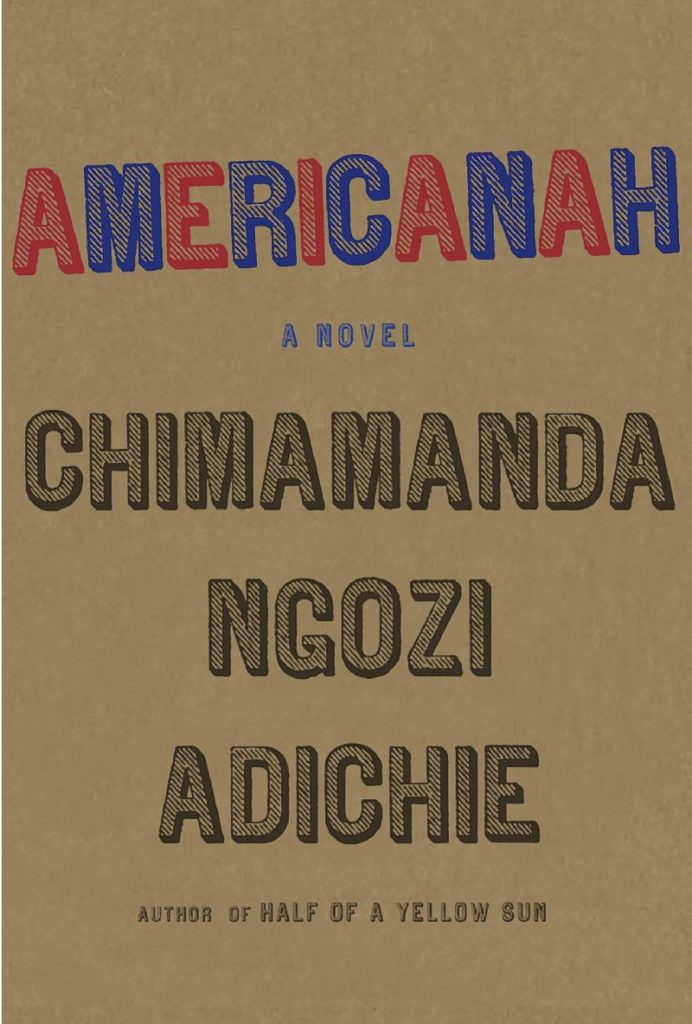 CHIMAMANDA NGOZI ADICHIE, AMERICANAH (2013)
CHIMAMANDA NGOZI ADICHIE, AMERICANAH (2013)
Chimamanda Ngozi Adichie’s third novel is many things at once: part social satire, part coming-of-age, part romantic comedy, part immigration story. It is expansive and engaging and deeply enjoyable. It insists on the multiplicity of immigrant experiences, including the idea that an immigrant who has found success in the US might return to her country of origin, as its female protagonist Ifemelu does. Born in Nigeria, Ifemelu comes to the US for college, and struggles to earn money, unhappily doing sex work at one point, but ultimately thrives as a writer, winning a fellowship at Princeton and writing a popular blog about her experience of race in the US as a black African. When the novel opens, she is preparing to return home. Ifemelu’s childhood friend and later boyfriend (then ex-boyfriend)—and the novel’s second narrator—Obinze, travels to England and similarly faces money struggles, though his result in deportation. Americanah does not shy away from either social critique or pure, satisfying romance. It is about identity, in both the capital and lowercase senses, and it succeeds in its precise drawing the humanity of its characters as well as the nuances of its cultures. –Jessie Gaynor, Social Media Editor
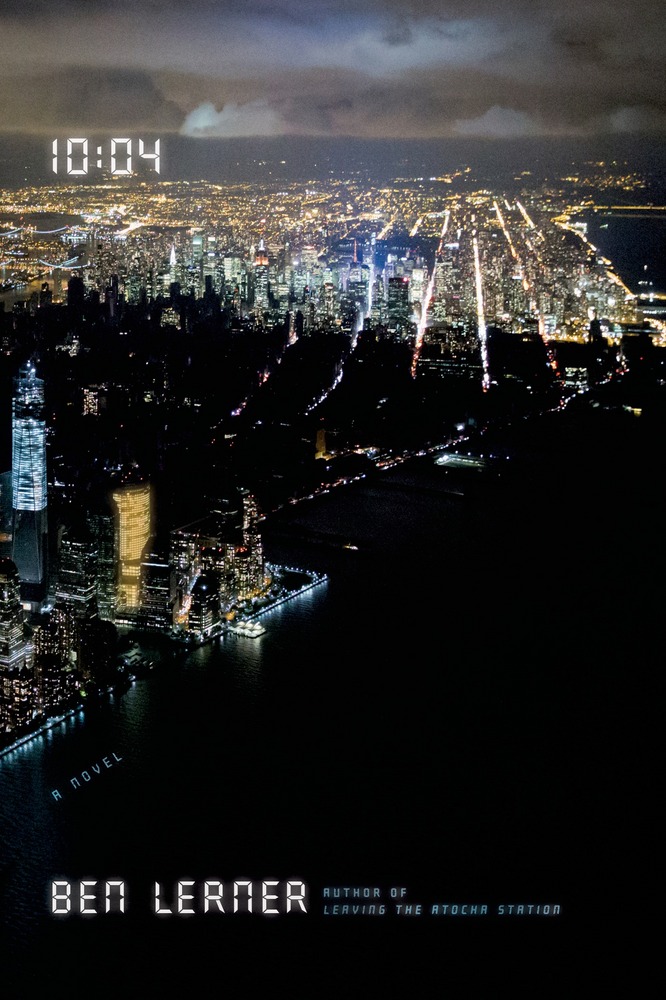 BEN LERNER, 10:04 (2014)
BEN LERNER, 10:04 (2014)
Considering his reputation, it’s actually a little jarring to remember that Ben Lerner has published all three of his novels (and one poetry collection) in the last decade. For those ready to jump down to the comments to tell me that actually, Lerner’s a poet—I know, dudes. Yes, he’d published two books of poetry before this decade (2006’s Angle of Yaw was a finalist for the National Book Award in Poetry), and he published another in 2010, but there’s really no denying that Lerner rose to general prominence with 2011’s slim, semi-autobiographical novel Leaving the Atocha Station, and that since then, he’s become a major name in the literary world primarily on the strength of his novels. Them’s the facts.
I reread both Leaving the Atocha Station and 10:04 recently, so as to better contextualize Lerner’s latest, The Topeka School, and found them both to still be pleasantly over-intellectual, funny, and flawed books—but 10:04 held up rather better, even with its “mild lacrimal events.” Yes, in 2019 the fact that he dropped a New Yorker story into his novel wholesale isn’t as charming as it was in 2014, but who cares? And sure, the novel is mostly just a series of Ben Lerner’s observations about art and people and the world, but who cares, and actually that’s exactly what I love about it, because Ben Lerner’s observations are better than most people’s, and because if a book makes me sit around and think deeply about the world I live in and the connections between phenomena, then I’m more than satisfied. Plus, it has a truly hilarious masturbation scene. Really, you can’t beat it. (No pun intended!!!!!!!) –Emily Temple, Senior Editor
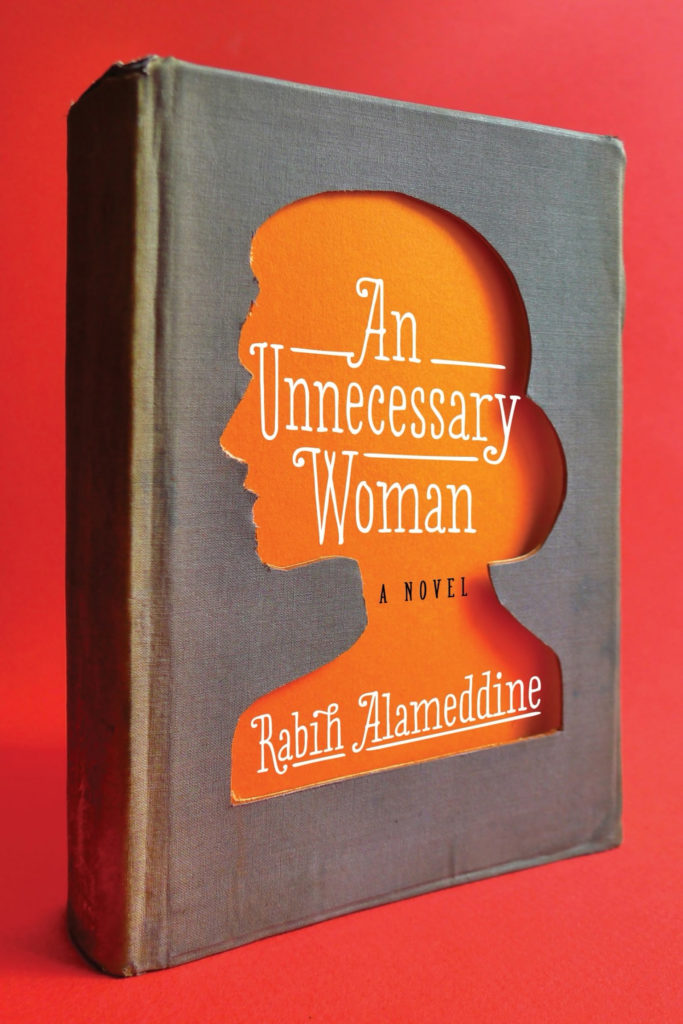 RABIH ALAMEDDINE, AN UNNECESSARY WOMAN (2014)
RABIH ALAMEDDINE, AN UNNECESSARY WOMAN (2014)
Of course I was going to love this book. This is a book about books. It has four (4) epigraphs. W. G. Sebald’s Austerlitz is mentioned on page three. Roberto Bolaño’s 2666 is mentioned on page six. That’s only the tip of the iceberg. Plus, it’s about an introverted, deliciously sardonic, relentlessly stubborn woman who hates pretty much everyone, but loves literature, and spends all her time hiding in her Beirut apartment, secretly translating all her favorite novels into Arabic. She’s been doing this for 50 years. No one has ever read any of them. Honestly, I can’t think of a book better suited to my temperament.
And that’s just the flashy headline. This is also a novel about the Lebanese Civil War, and about how we treat people who live at the margins, particularly women, particularly older women. This is also a novel about loneliness, and about grief, and about how language can help us negotiate these, and the limits of that negotiation.
But probably the best argument for this book as one of the greatest of the decade is this: Aaliya’s is one of the best narratorial voices I have ever read. She is unusual, contemplative, critical, complex, candid, rude and tender. She’s absurdly compelling. If the truly great novels are those that invent and maintain a unique quality of mind (and for me, they are), this is one of the greatest. –Emily Temple, Senior Editor
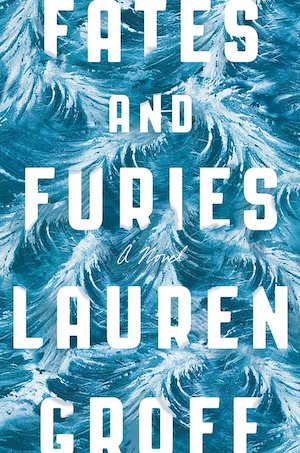 LAUREN GROFF, FATES AND FURIES (2015)
LAUREN GROFF, FATES AND FURIES (2015)
Things were pretty good in 2015—Obama was president, the Paris Agreement was drafted, the Supreme Court affirmed same sex marriage (plus a little website called Lit Hub launched). And Lauren Groff’s third novel, Fates and Furies, was published. A finalist for the National Book Award, the book was a sensation, garnering positive reviews from everyone (including Obama, who said it was his favorite book of 2015). The novel begins on the day a young couple Lancelot (Lotto) Satterwhite and Mathilde Yoder marry, a mere two weeks after they meet. The way their love grows is told in the first half of the book, following Lotto’s mythic-hero story (born during a hurricane to a theme-park mermaid mother) he struggles as an actor before transforming into a brilliant playwright. He is a man touched by fate, who doesn’t question his successes. The second half of the novel turns the story on its head, Mathilde revealing herself as the catalyst for Lotto’s good fortune. As the story is retold and reshaped from her perspective, not only are gaps filled, but are secrets revealed. In an interview for Lit Hub, Groff said the novel is a “conversation about marriage, but also about privilege and background and our personality and how we deal with the world.” Fates and Furies takes a fairy tale marriage and probes its deepest darknesses and psychological depths with perfect, lyrical prose. If somehow you missed it when it was first published, this is your alarm to pick it up now. –Emily Firetog, Deputy Editor
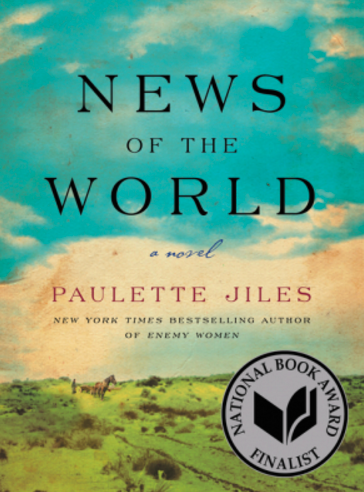 PAULETTE JILES, NEWS OF THE WORLD (2016)
PAULETTE JILES, NEWS OF THE WORLD (2016)
A magnificently vivid and thoroughly heartwarming odd couple adventure tale set in the aftermath of the Civil War, in which Captain Jefferson Kyle Kidd—an elderly (but still spry) widower and veteran of three wars who roams the towns of Northern Texas, spreading the good word that the 15th Amendment has just been ratified and reading newspaper stories from distant lands to town halls full of rapt locals—finds himself tasked with delivering a young orphan girl (the delightfully quarrelsome former Kiowa “captive” Johanna) across 400 miles of unsettled territory to her relatives in San Antonio. As I have detailed at excruciating length to anyone who’ll listen over the past three years, I love everything about this tender gem of a novel: the way Jiles textures her Old West landscape with Kidd’s tersely poetic observations and ironic musings, the old-fashioned getaway and gunsmoke thrills over which she allows her mismatched protagonists to bond, her masterful blending of humor and suspense, and the pleasure she takes in detailing a disappearing way of life. It’s an exquisite portrait of two wary, worn-out souls, starved of love and unmoored from the worlds they knew, finding unlikely solace in one another. What begins as a hilariously combative battle of wills between this unlikely pair of malcontents becomes, by the close, something altogether more poignant, more precious. If I’m making this sound treacly and sentimental, forgive me, for it is neither. There’s nothing cheap, nothing unearned about the warmth that radiates from its closing pages, the sweet sorrow we feel at their journey’s end. –Dan Sheehan, Book Marks Editor
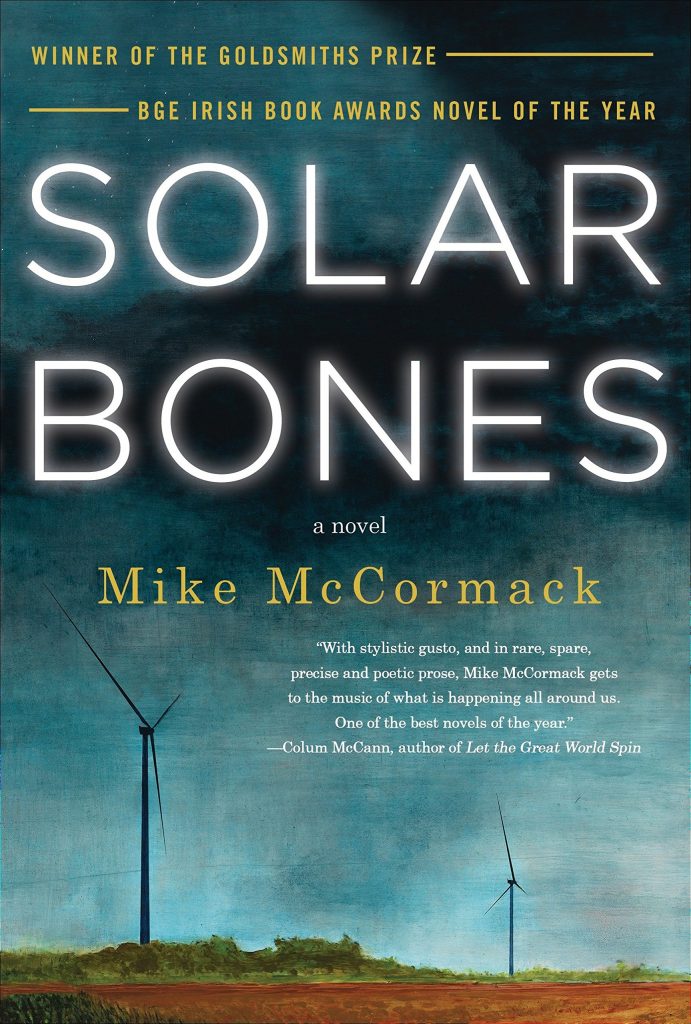 MIKE MCCORMACK, SOLAR BONES (2016)
MIKE MCCORMACK, SOLAR BONES (2016)
The flap copy on my edition of Solar Bones gives away the ending, or at least the kicker. I’m going to give it away again, now, so look away if you’re one of those people who clutches their pearls at “spoilers,” as if one could spoil great literature by detailing any point of its plot. So: Marcus Conway is dead. And in this exceptional, strange novel, whose present action is no more than a few hours on All Souls’ Day, Marcus sits at his kitchen table and recounts the day of his death—and much of the life that came before it—in one book-length sentence, an incantatory ode to small town life in western Ireland. But the experimental formatting isn’t even the most impressive feature of the novel—I mean, before this I never would have imagined that I could be so enchanted by a book largely about the daily habits and various relationships and minor work dramas of a middle-aged civil engineer. What magic is that?
And ultimately, that’s what is so profound about this novel: it takes something quite straightforward—a regular person’s life—and presents it so carefully, so lyrically and specifically, that it can’t help but become cosmic, philosophical, a whole world to wonder at. This is why the ending—whether you know it’s coming or not—is so gutting. It’s an apocalypse, a small one, and you feel it, even as the cars continue to stream by outside your bedroom window. –Emily Temple, Senior Editor
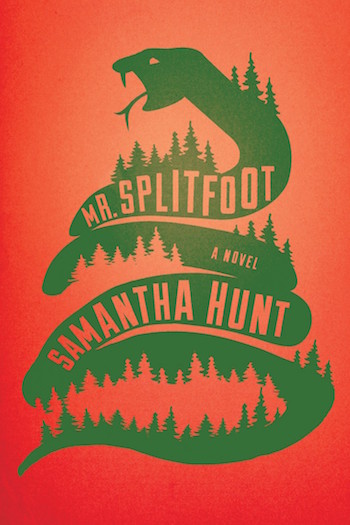 SAMANTHA HUNT, MR. SPLITFOOT (2016)
SAMANTHA HUNT, MR. SPLITFOOT (2016)
Mr. Splitfoot, Samantha Hunt’s third novel, is her creepiest, and maybe her saddest. It is about two preteens—orphans—Ruth and Nat, who live in desolate upstate New York at the Love of Christ! Foster Home, Farm, and Mission, a terrible place run by a greedy religious psychopath. Ruth is in love with Nat, while Nat is enamored of his own skills—somehow, he can speak to the dead. He can summon the deceased parents of the children who live in the home. It’s during one of his séances that they are interrupted by a new character—a charismatic charlatan named Mr. Bell who wants to help Nat profit financially from his talent. This interloper is obviously bad news—but the sense of foreboding around him and their whole enterprise is gravely augmented by the fact that every other chapter of the novel takes place many years later. Ruth, now an adult, is there, and Nat is nowhere to be found. This older Ruth also does not talk at all now, but she is determined to help a young woman, her niece Cora, escape something dangerous.
Hunt’s novels, in general, are tremendously atmospheric, but Mr. Splitfoot might take the cake—here, she is a veritable cinematographer. The ambiance she designs is exceptionally vivid: alternately shadowy and garish, extremely lonely and damp. It’s weird that the novel’s setting is so real and ordinary (just outside Troy, New York) because the story is so otherworldly, so metaphysical, so much a sinister fairy tale. The novel conjures its hair-raising, skin-crawling pulse from grotesque Christian iconography, dank forests, and smoky ghosts that might resemble what mothers look like (though, among the very motherless ensemble, no one knows for sure). Mr. Splitfoot is rich in symbolism, which might feel too-thickly applied for some readers, but I think it fits the overall generousness of her storytelling. Hunt doesn’t just write fiction; like the magical waifs at the center of her story, she truly brings things to life—though to put it this way might be laying things on a bit thick, as well. –Olivia Rutigliano, CrimeReads Editorial Fellow
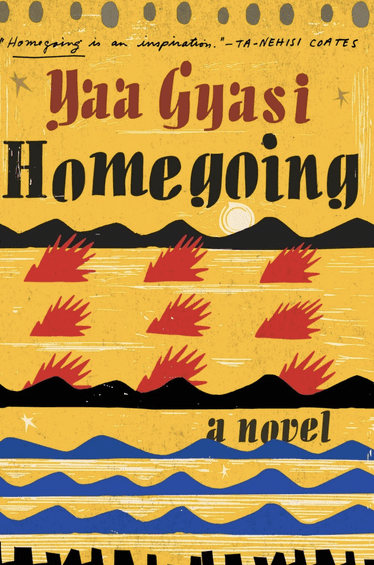 YAA GYASI, HOMEGOING (2016)
YAA GYASI, HOMEGOING (2016)
Homegoing, Yaa Gyasi’s sweeping narrative of the slave trade’s toll on a family lineage across three centuries, begins with two half-sisters in 18th-century Ghana: Effia, whose marriage to the British governor of Cape Coast Castle furnishes her with security and wealth, and Esi, who is kidnapped and sold into bondage, waiting for passage to the Americas in the packed, rank dungeons under the fortress where Effia lives in luxury. Each chapter is told from the perspective of one of their descendants, unfolding the effects of slavery on both sides of the Atlantic: in West Africa, families and villages are torn apart by war and kidnappings; in America, the inhuman brutality of American slavery, rumors of which provoke horror among those who remain in Africa, leads into the era of Jim Crow apartheid and torture. In the book’s earlier scenes, some of its most vivid, Isabel Wilkerson wrote for The New York Times that Gyasi “walks assuredly through the terrain of Alex Haley, Solomon Northup and Chimamanda Ngozi Adichie in her intimate rendering of the human heart battered by the forces of conquest and history.” Some critics contended that the book’s later scenes, in the modern-day US, relied on stereotypes that were “sometimes unquestioningly imported, rather than combatted, subverted, and complicated,” Kate Osana Simonian wrote for The Kenyon Review. Regardless, this book is an astonishing testament to survival and a witness to the ancestral wisdom and ingenuity that made survival possible. –Corinne Segal, Senior Editor
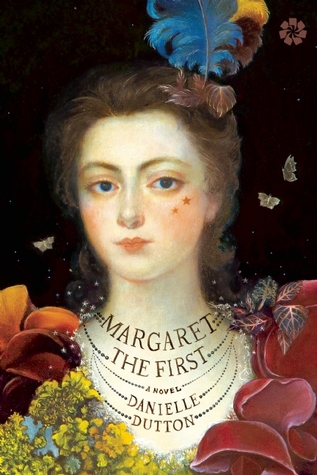 DANIELLE DUTTON, MARGARET THE FIRST (2016)
DANIELLE DUTTON, MARGARET THE FIRST (2016)
I have been recommending this slim, glinting dagger of novel since it came out in 2016, to anyone who will listen, and I’m not going to stop now. Look, “best of” lists like this one should be messy and idiosyncratic and unexpected, reflections of long and heated arguments by people who care a lot about books and are always reading—what they shouldn’t be is calibrated to please everyone. Having said that—and aside from my love of Danielle Dutton’s miraculous first-person inhabitation of 17th-century Renaissance woman Margaret Cavendish—I would like this book to serve as representative evidence of all the short novels that might not be epic in length, but are so in scope, that are too often left off lists like this one because they don’t immediately register as monumental. But back to the book.
Of noble station, Margaret Cavendish—aka “Mad Madge—was a real person, a writer of plays, poetry, philosophical treatises, scientific theories, and more. The first woman ever invited to the Royal Society in London, Cavendish did, indeed, achieve the intellectual fame she’d long sought; unsurprisingly, her accomplishments were diminished at every turn, as many claimed her books must have been written by her husband. Dutton (who founded Dorothy: A Publishing Project) realizes the outsize ambitions of this remarkable book with virtuosic efficiency, braiding first- and third-person perspectives with passages from Cavendish’s original writing. I will be recommending this book for the next decade. –Jonny Diamond, Editor in Chief
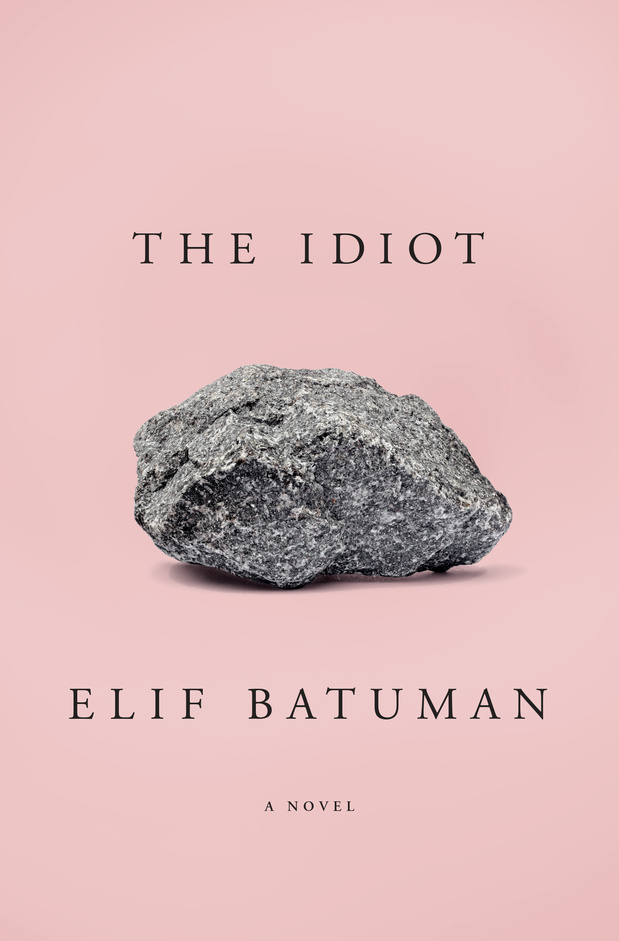 ELIF BATUMAN, THE IDIOT (2017)
ELIF BATUMAN, THE IDIOT (2017)
The Idiot is one of those books that expanded my understanding of what a novel could look like. It is meandering, but it meanders with such gusto that I never doubted that Elif Batuman knew exactly where she was leading me. The Idiot is a campus novel, telling the story of its protagonist’s first year at Harvard. She—Selin—has a romantic interest (their relationship is sort of one-and-a-half-sided—their courtship mostly takes place in the then-nascent medium of email), but mostly she bobs along. That’s part of it, the bobbing. Selin is something of a buoy in a world of torpedoes. If this sounds tiresome, consider the profound power of the incredibly funny, linguistically virtuosic narrator. The Idiot is occasionally baggy, but its voice is so thoroughly charming that I could have read volumes of it. Selin is, if occasionally bewildered, also full of wonder, without any of the tweeness with which that word is sometimes unfairly burdened. The Idiot is a novel of ideas, a novel of fascination. And it’s just so damn funny. Of the novel’s humor, Cathleen Schine writes, “Language is the medium and language is the comedian, language is the star and the prop, Chaplin and the globe he balances, the hungry fellow and the shoe he dines on.” The Idiot is, for all its shaggy bits, a perfectly self-contained world. –Jessie Gaynor, Social Media Editor
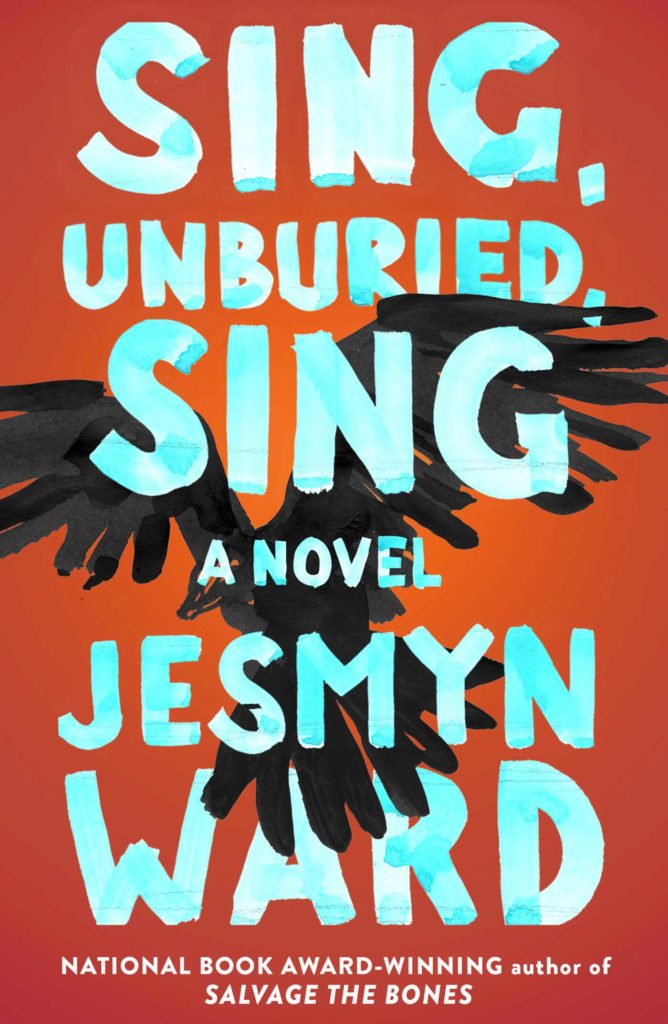 JESMYN WARD, SING, UNBURIED, SING (2017)
JESMYN WARD, SING, UNBURIED, SING (2017)
Jesmyn Ward is a MacArthur genius grant recipient, a two-time National Book Award winner, and a former TIME 100 honoree, as well as the author of one of the most powerful and affecting memoirs of the last ten years, so why does it still feel like she’s under-read? Granted, Ward is not one of the book world’s Very Online Authors, nor does she qualify as a literary wunderkind (though I’d argue that winning two National Book Award by the still-young age of forty is pretty damn wunderful), and she and her work have never really been subjected to the kind of breathless op-ed assault that can, as a silver lining, serve to raise awareness of a title, but still… All that throat-clearing is to say that if you haven’t yet gotten around to reading Ward’s work, you really, really should. She is a truly magnificent writer and one of the most poetic and humane chroniclers of the trauma that generations of systemic racism has inflicted upon the contemporary black American family. Her finest (and most harrowing) work to date, Sing, Unburied, Sing is an intimate, mystical portrait of a fractured Mississippi Gulf Coast family and the painful histories and buried secrets that plague its members as they embark upon a journey to the State Penitentiary. As she does in 2011’s Salvage the Bones, Ward infuses this devastating Southern realist tale with a sort of mythic grandeur. Her language is lyrical, hypnotic, haunted by a deep and profound sorrow as her characters are haunted by the ghosts of young men brutally and prematurely wrenched out of the world. –Dan Sheehan, Book Marks Editor
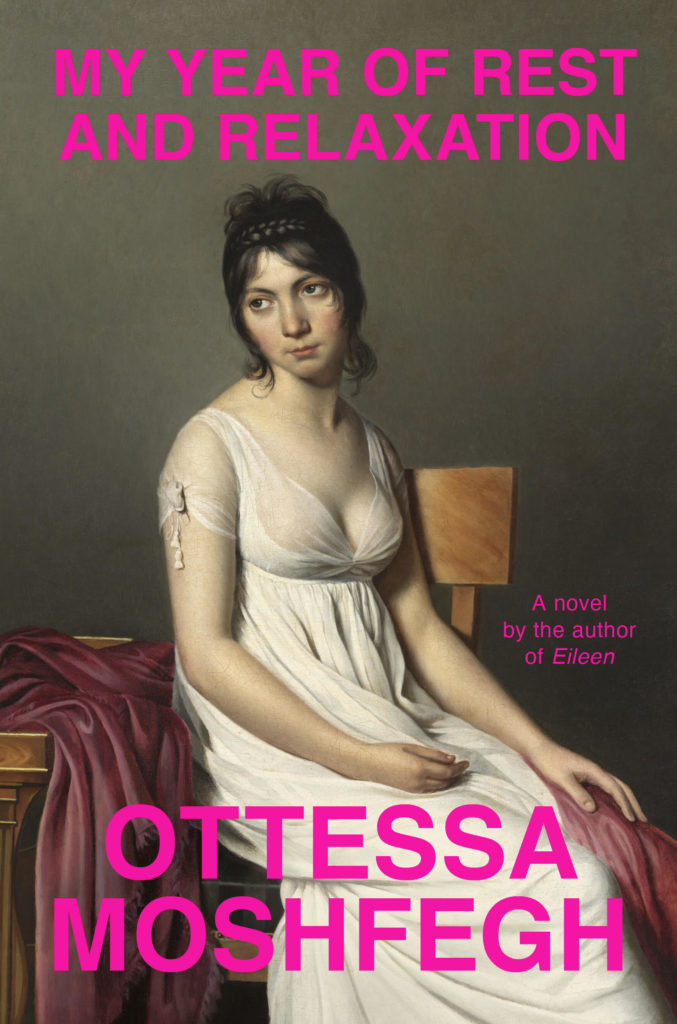 OTTESSA MOSHFEGH, MY YEAR OF REST AND RELAXATION (2018)
OTTESSA MOSHFEGH, MY YEAR OF REST AND RELAXATION (2018)
If I were to choose one word to describe my experience reading Ottessa Moshfegh’s latest novel, the word would be delight. It’s just so goddamn fun, and weird, and, well, mean in a way you’re not allowed to be, usually, either in literature or in life, which made me love it (look, she’s not hurting anybody, everyone is fictional, let me have this).
Like many readers (and writers) I know, I first fell for Moshfegh via her stories in the Paris Review, and 2017 her collection Homesick for Another World. My Year of Rest and Relaxation picks up some of her stories’ elements—horrible people, anger, dissociation between reality and interiority—while feeling like a much bigger, better, complex work. Well, it’s a novel, after all, and it’s a good one.
As you may know, the book centers on an unnamed narrator (rich, she tells us, and pretty) living in New York City, whose parents have recently died, and who would like to take a “year of rest and relaxation” via a drug stupor, waking only every three days to eat. She is sometimes stymied by Reva, her “best friend,” but eventually more or less succeeds, and wakes in the summer of 2001, slowly readjusting to her life before she’ll have to readjust all over again.
And not for nothing, the latter half of this decade has made me extremely sympathetic to the quest to spend a year asleep. As long as I’d still be able to vote (absentee ballot?), I would happily agree to be unconscious for 2020. Just think of all the bullshit I’d miss. –Emily Temple, Senior Editor
 SALLY ROONEY, NORMAL PEOPLE (2018)
SALLY ROONEY, NORMAL PEOPLE (2018)
Just popping in to introduce you to a book you’ve definitely never heard anything about, an underappreciated novel I like to call Normal People. Just kidding! I’m sure you know all about it. I’m sure it’s the first thing you see when you walk into your local indie. I’m sure you probably tried to go to the Books Are Magic event that so many people RSVP’d to that they had to move it to a local church (and it was still packed!). You are probably also pumped for the TV adaptation—right? There is good reason for the hype, friends. From Sally Rooney, celebrated author of Conversations With Friends and heralded as “the first great millennial writer” comes the story of Connell and Marianne. Connell is your quintessential cool kid (popular, star of the football team, etc.), while Marianne lives a more solitary and private high school existence. His mother works for her family. One day, when Connell comes to pick his mother up from Marianne’s house, an unlikely connection grows between the two teenagers. Through Sally Rooney’s masterfully controlled prose, we follow them through the halls of their high school, where they pretend not to know each other. We follow them as they outgrow the place, shed friendships, move away from home. We follow them to university. We see them thrive and wilt, ebb and flow. There is something about Sally Rooney’s writing that is so certain, that makes us trust the feelings of the characters. She cuts to the core of them. Normal People is a biting portrait of an intimate relationship as a living, breathing thing. But in the periphery, through some details of circumstance, it also examines socioeconomic class (Sally Rooney has said she wants to write “a Marxist novel”) in a way that reads like George Eliot’s Middlemarch for the modern age. –Katie Yee, Book Marks Assistant Editor
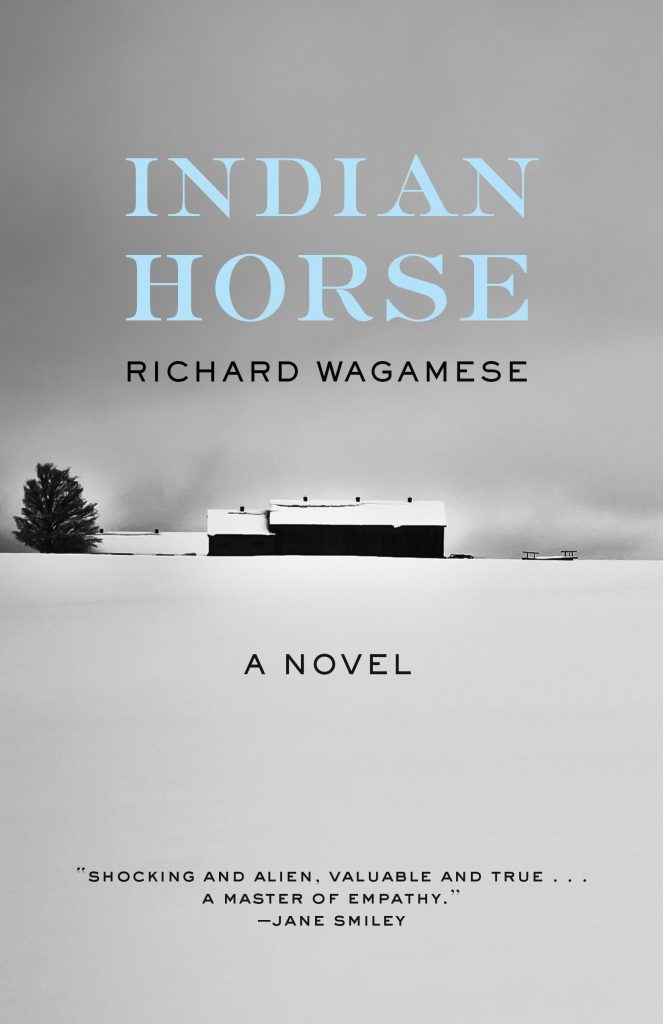 RICHARD WAGAMESE, INDIAN HORSE (2018)
RICHARD WAGAMESE, INDIAN HORSE (2018)
Most of us (I hope) are at least intellectually aware of the centuries of colonial violence meted out by European settlers upon the Indigenous nations of North America, and though we don’t need to feel something to grasp its injustice, art is here to remind us of the specific human cost of systematized theft and racism.
The late Richard Wagamese’s Indian Horse (first published in Canada in 2012, but released in the US by Milkweed in 2018) recounts the all too familiar story of Indigenous children stolen from their parents to be (re)educated in the ways of Christian empire. In this case, that story happens in one of Canada’s notorious “residential schools,” church-run boarding schools that were effectively prisons, in which all traces of First Nations’ culture were forbidden (language, first and foremost), and where neglect, abuse, and even murder, were tragically commonplace. Though the material is necessarily grim, Wagamese doesn’t fetishize despair, and allows his main character, Saul, the chance to feel something like joy as he discovers a preternatural talent for hockey. And though the sport might only represent a brief respite for Saul, from a lifetime of pain and loss, these sections contain the best writing about a sport I have ever read. –Jonny Diamond, Editor in Chief
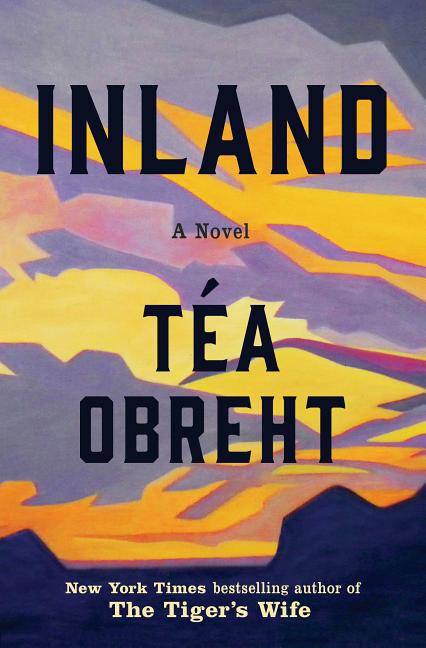 TÉA OBREHT, INLAND (2019)
TÉA OBREHT, INLAND (2019)
You’d be forgiven, if you read Téa Obreht’s 2011 debut The Tiger’s Wife (ahem, see above), for having high expectations for her sophomore effort, especially considering it’s been 8 years in the making.
You’d be forgiven, and you wouldn’t be disappointed. This is a lush, wide-ranging, and fully American novel, a revisioning of a classic Western, imbued, as all the best revisionings are, with many of the satisfactions of the trope, but presented alongside a set of new and better ones.
For instance, for a Western, it’s not particularly violent—or not as violent as you’d expect, though what is there was so well-written as to make me gasp—and instead we get the aftermath: the ghosts. Ghosts are everywhere in this novel, reminding us that every place and time has its own history, its own victims, its own way of self-consideration. Both Nora and Lurie see them, though it’s not always clear that they both believe them. We believe them, though: such is the compelling texture of Obreht’s prose.
There are two stories at play here: as the novel opens, Nora, a frontierswoman in the Arizona Territory in the late 19th century, waits more or less patiently for her husband and two eldest sons to return, as her water runs out and her youngest son begins to see monsters in the underbrush; then there’s Lurie, the outlaw and immigrant who joins the United States Camel Corps (yes, this is a thing) and begins a long trek.
These two stories eventually converge, in a way I didn’t see coming at all—though in retrospect it was perfectly orchestrated, inevitable, really. Maybe it was my level of immersion that kept me from noticing Obreht’s deft use of time and space between and within the two narratives. Suffice it to say, if this is a new American myth, I’ll take it. –Emily Temple, Senior Editor
***
Honorable Mentions
A selection of other books that we seriously considered for both lists—just to be extra about it (and because decisions are hard).
Emma Donoghue, Room (2010) · Jonathan Franzen, Freedom (2010) · Tana French, Faithful Place (2010) · Maaza Mengiste, Beneath the Lion’s Gaze (2010) · Aimee Bender, The Particular Sadness of Lemon Cake (2010) · Brady Udall, The Lonely Polygamist (2010) · Attica Locke, Black Water Rising (2010) · Jaimy Gordon, Lord of Misrule (2010) · Chang-rae Lee, The Surrendered (2010) · Paul Murray, Skippy Dies (2010) · Tom Rachman, The Imperfectionists (2010) · Nadifa Mohamed, Black Mamba Boy (2010) · Andrea Levy, The Long Song (2010) · Helen Oyeyemi, Mr. Fox (2011) · Nicholson Baker, House of Holes (2011) · Ann Patchett, State of Wonder (2011) · Alan Hollinghurst, The Stranger’s Child (2011) · Dana Spiotta, Stone Arabia (2011) · Justin Torres, We the Animals (2011) · Teju Cole, Open City (2011) · Donald Ray Pollock, The Devil All the Time (2011) · Eleanor Henderson, Ten Thousand Saints (2011) · Kevin Wilson, The Family Fang (2011) · Francisco Goldman, Say Her Name (2011) · Colson Whitehead, Zone One (2011) · Karen Russell, Swamplandia! (2011) · José Saramago, Cain (2011) · Julian Barnes, The Sense of an Ending (2011) · Ben Lerner, Leaving the Atocha Station (2011) · Adam Johnson, The Orphan Master’s Son (2012) · Edward St. Aubyn, At Last (2012) · Barbara Kingsolver, Flight Behavior (2012) · Sheila Heti, How Should a Person Be? (2012) · Karen Thompson Walker, The Age of Miracles (2012) · Louise Erdrich, The Round House (2012) · Kevin Powers, The Yellow Birds (2012) · Gillian Flynn, Gone Girl (2012) · G. Willow Wilson, Alif the Unseen (2012) · Amanda Coplin, The Orchardist (2012) · Hilary Mantel, Bring Up the Bodies (2012) · Zadie Smith, NW (2012) · Andrew Miller, Pure (2012) · Orhan Pamuk, Silent House (2012) · Jess Walter, Beautiful Ruins (2012) · Amelia Gray, Threats (2012) · Kevin Barry, City of Bohane (2012) · Jeet Thayil, Narcopolis (2012) · James Salter, All That Is (2013) · Edwidge Danticat, Claire of the Sea Light (2013) · James McBride, The Good Lord Bird (2013) · Mohsin Hamid, How to Get Filthy Rich in Rising Asia (2013) · Jhumpa Lahiri, The Lowland (2013) · Philipp Meyer, The Son (2013) · J. M. Ledgard, Submergence (2013) · Anthony Marra, A Constellation of Vital Phenomena (2013) · Alissa Nutting, Tampa (2013) · Margaret Atwood, MaddAddam (2013) · Ayana Mathis, The Twelve Tribes of Hattie (2013) · Donna Tartt, The Goldfinch (2013) · William H. Gass, Middle C (2013) · Kate Atkinson, Life After Life (2013) · Eleanor Catton, The Luminaries (2013) · Jim Harrison, Brown Dog (2013) · NoViolet Bulawayo, We Need New Names (2013) · Laila Lalami, The Moor’s Account (2014) · Atticus Lish, Preparation for the Next Life (2014) · Eimear McBride, A Girl is a Half-Formed Thing (2014) · Lily King, Euphoria (2014) · Akhil Sharma, Family Life (2014) · Emily St. John Mandel, Station Eleven (2014) · Dinaw Mengestu, All Our Names (2014) · Marilynne Robinson, Lila (2014) · Anthony Doerr, All the Light We Cannot See (2014) · Marlon James, A Brief History of Seven Killings (2014) · Nell Zink, The Wallcreeper (2014) · Catherine Lacey, Nobody is Ever Missing (2014) · Chang-Rae Lee, On Such a Full Sea (2014) · Jeffery Renard Allen, Song of the Shank (2014) · Nell Zink, The Wallcreeper (2014) · Celeste Ng, Everything I Never Told You (2014) · Merritt Tierce, Love Me Back (2014) · Siri Hustvedt, The Blazing World (2014) · Tom McCarthy, Satin Island (2015) · Angela Flournoy, The Turner House (2015) · Alexandra Kleeman, You Too Can Have a Body Like Mine (2015) · Ali Smith, How to Be Both (2015) · Sara Nović, Girl at War (2015) · Scarlett Thomas, The Seed Collectors (2015) · Nell Zink, Mislaid (2015) · James Hannaham, Delicious Foods (2015) · Claire-Louise Bennett, Pond (2016) · Jane Alison, Nine Island (2016) · Nicole Dennis-Benn, Here Comes the Sun (2016) · Max Porter, Grief is the Thing with Feathers (2016) · Imbolo Mbue, Behold the Dreamers (2016) · Tony Tulathimutte, Private Citizens (2016) · Emma Cline, The Girls (2016) · Deborah Levy, Hot Milk (2016) · Martin Seay, The Mirror Thief (2016) · Brit Bennett, The Mothers (2016) · Garth Greenwell, What Belongs to You (2016) · Jade Sharma, Problems (2016) · Adam Haslett, Imagine Me Gone (2016) · Esmé Weijun Wang, The Border of Paradise (2016) · Victor LaValle, The Changeling (2017) · Jon McGregor, Reservoir 13 (2017) · Andrew Sean Greer, Less (2017) · Katie Kitamura, A Separation (2017) · Scott McClanahan, The Sarah Book (2017) · Gabe Habash, Stephen Florida (2017) · George Saunders, Lincoln in the Bardo (2017) · Mohsin Hamid, Exit West (2017) · Hari Kunzru, White Tears (2017) · Omar El Akkad, American War (2017) · Jennifer Nansubuga Makumbi, Kintu (2017) · Min Jin Lee, Pachinko (2017) · Sally Rooney, Conversations With Friends (2017) · Fiona Mozley, Elmet (2017) · Amelia Gray, Isadora (2017) · Julie Buntin, Marlena (2017) · Tayari Jones, An American Marriage (2018) · Sigrid Nunez, The Friend (2018) · Madeline Miller, Circe (2018) · Nico Walker, Cherry (2018) · R. O. Kwon, The Incendiaries (2018) · Tommy Orange, There There (2018) · Gina Apostol, Insurrecto (2018) · Daisy Johnson, Everything Under (2018) · Dan Sheehan, Restless Souls (2018) · Tara Isabella Burton, Social Creature (2018) · Chandler Klang Smith, The Sky is Yours (2018) · Rebecca Makkai, The Great Believers (2018) · Jamie Quatro, Fire Sermon (2018) · Chloe Benjamin, The Immortalists (2018) · Akwaeke Emezi, Freshwater (2018) · Ling Ma, Severance (2018) · Lisa Halliday, Asymmetry (2018) · Wayétu Moore, She Would Be King (2018) · Ocean Vuong, On Earth We’re Briefly Gorgeous (2019) · Helen Phillips, The Need (2019) · Maurice Carlos Ruffin, We Cast a Shadow (2019) · Sarah Moss, Ghost Wall (2019) · Sophie Mackintosh, The Water Cure (2019) · Jeanette Winterson, Frankissstein (2019) · Lucy Ellman, Ducks, Newburyport (2019) · De’Shawn Charles Winslow, In West Mills (2019) · Sandra Newman, The Heavens (2019) · Colson Whitehead, The Nickel Boys (2019) · Elizabeth McCracken, Bowlaway (2019) · Kathleen Alcott, America Was Hard to Find (2019).


No comments:
Post a Comment